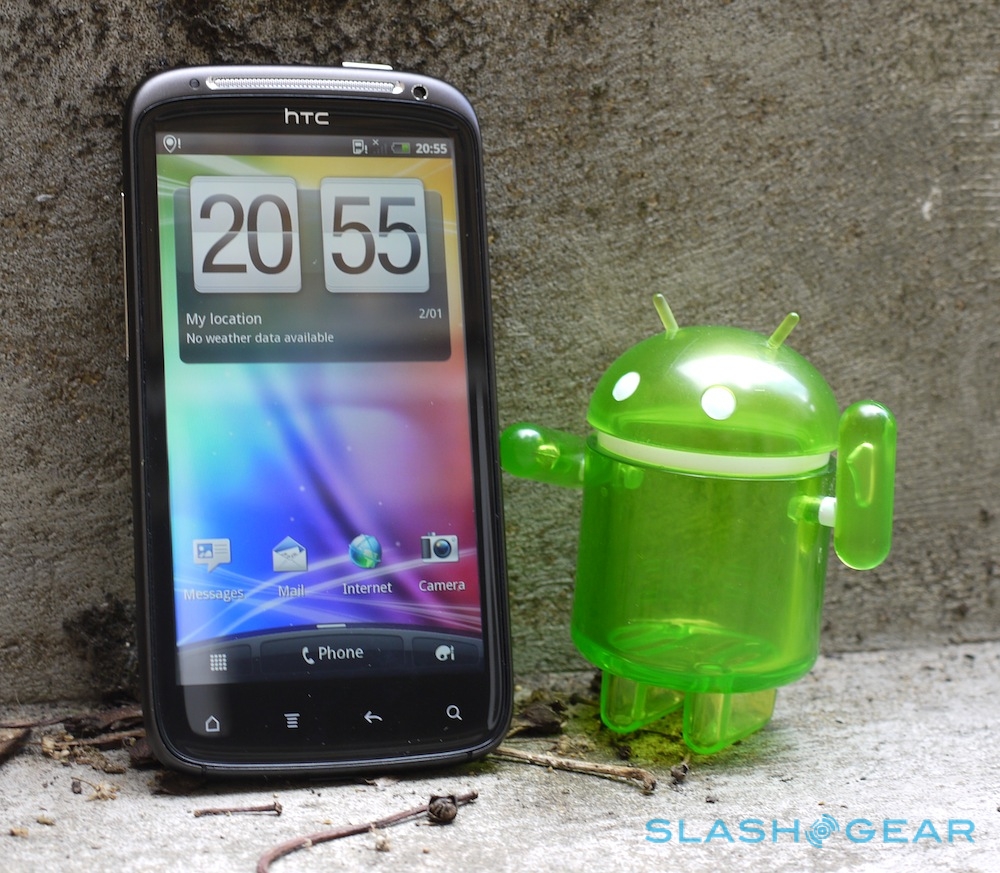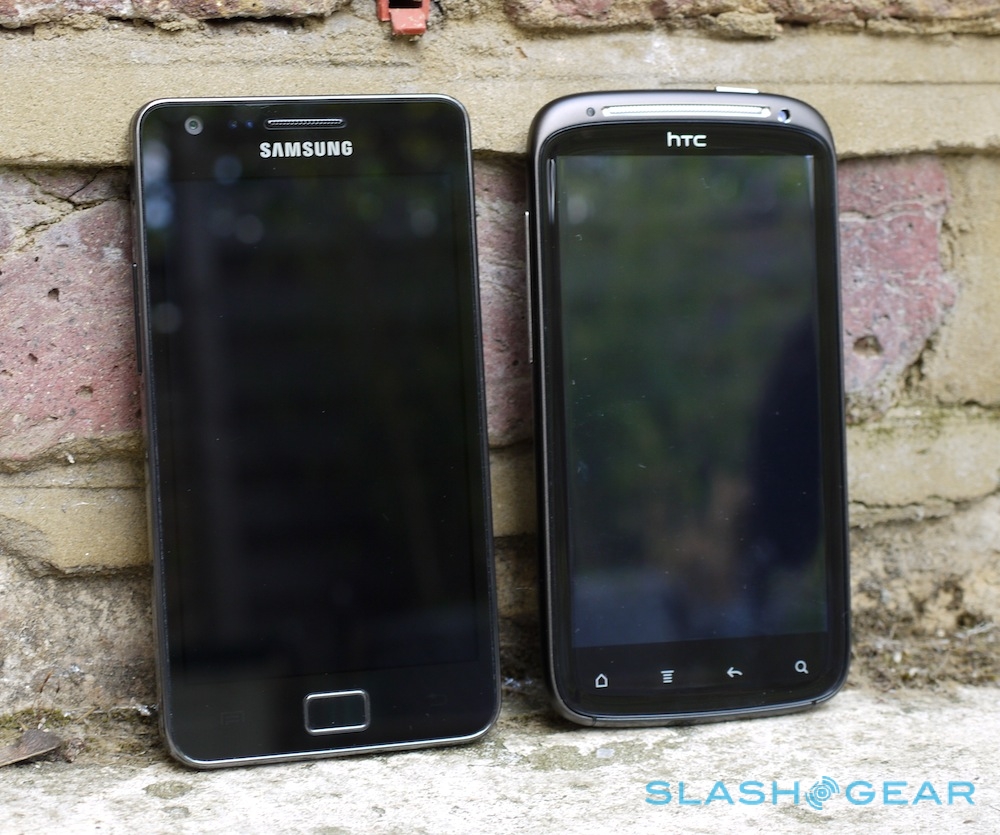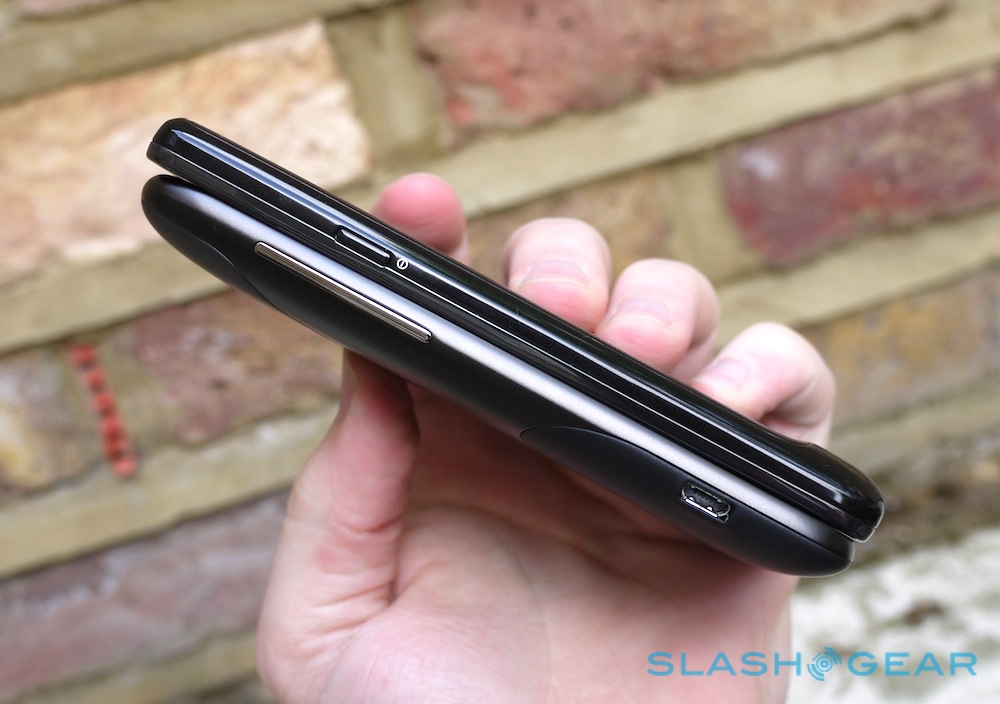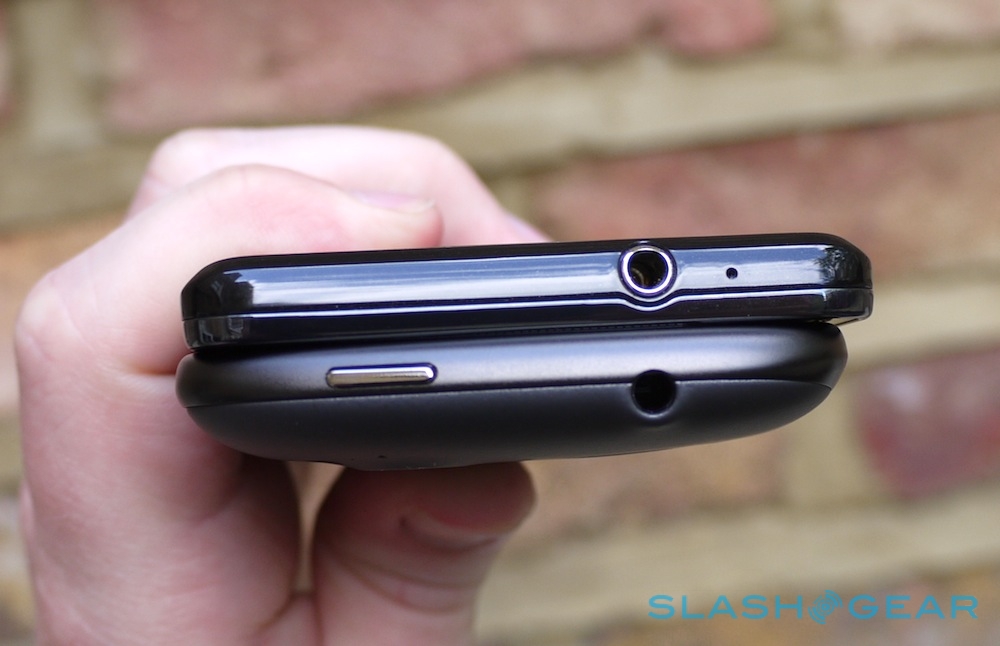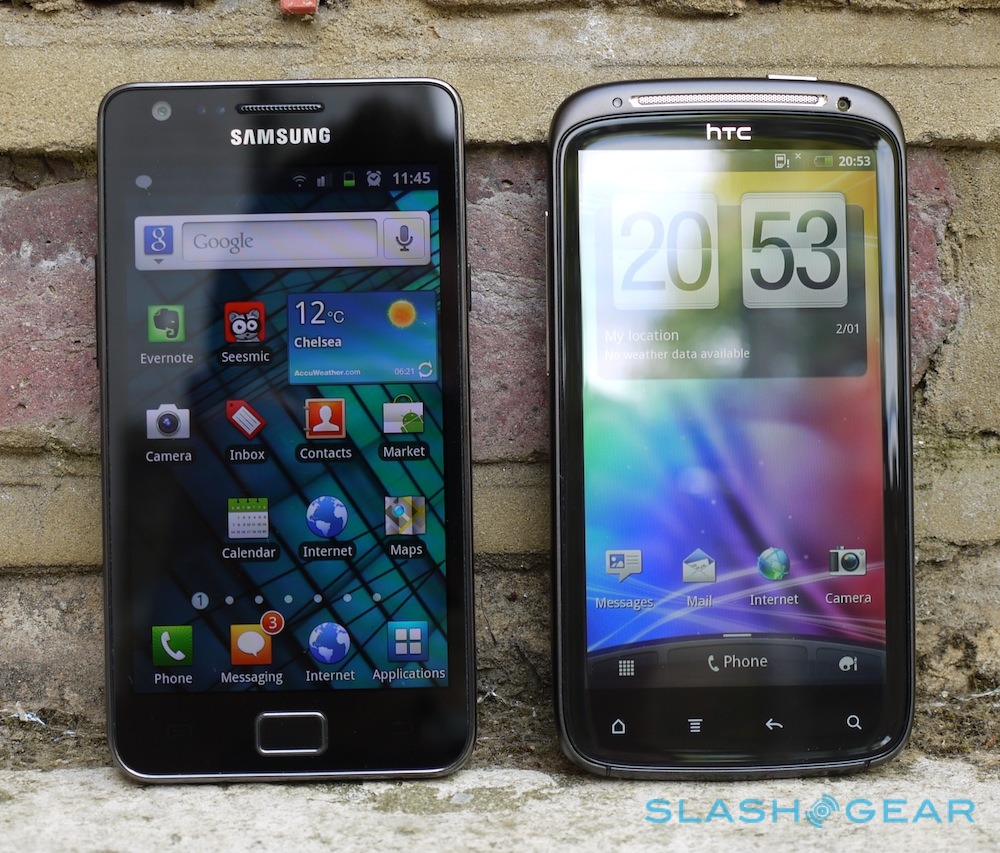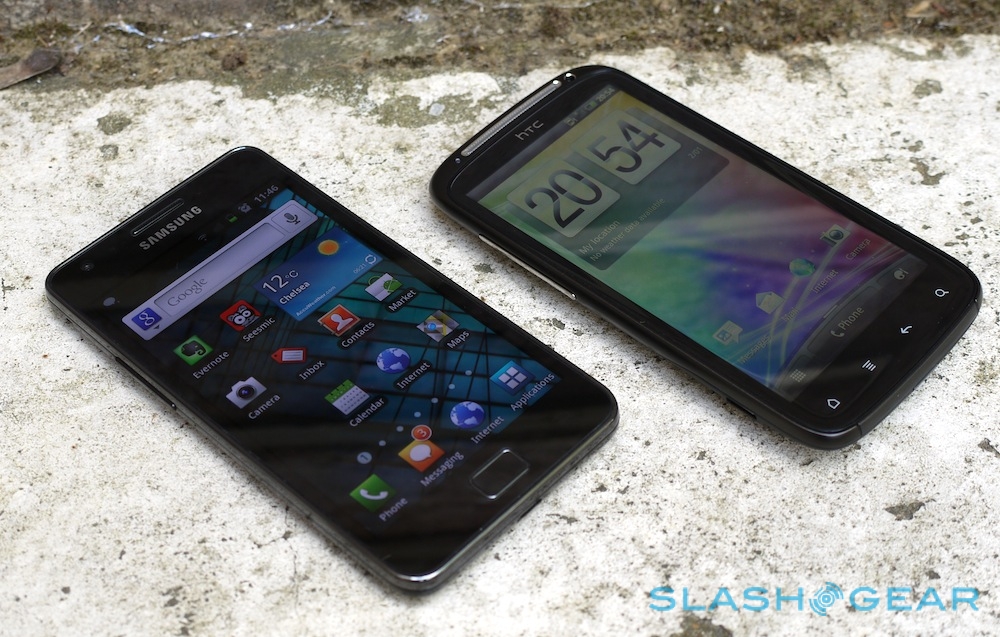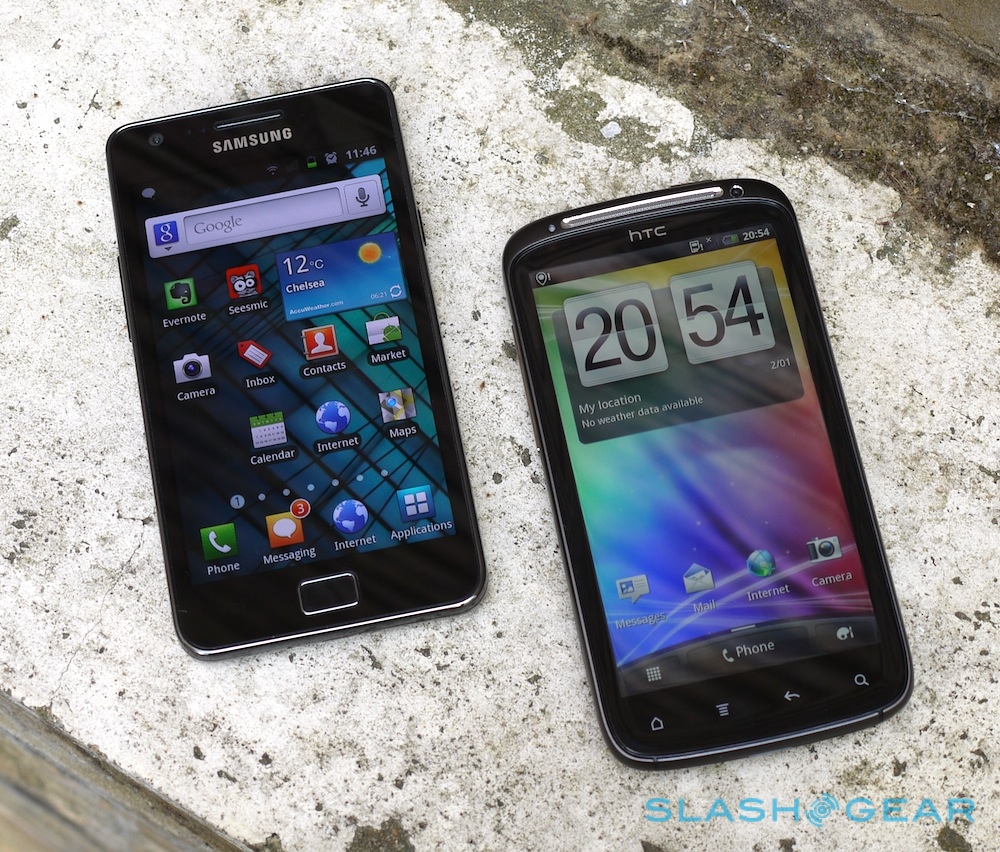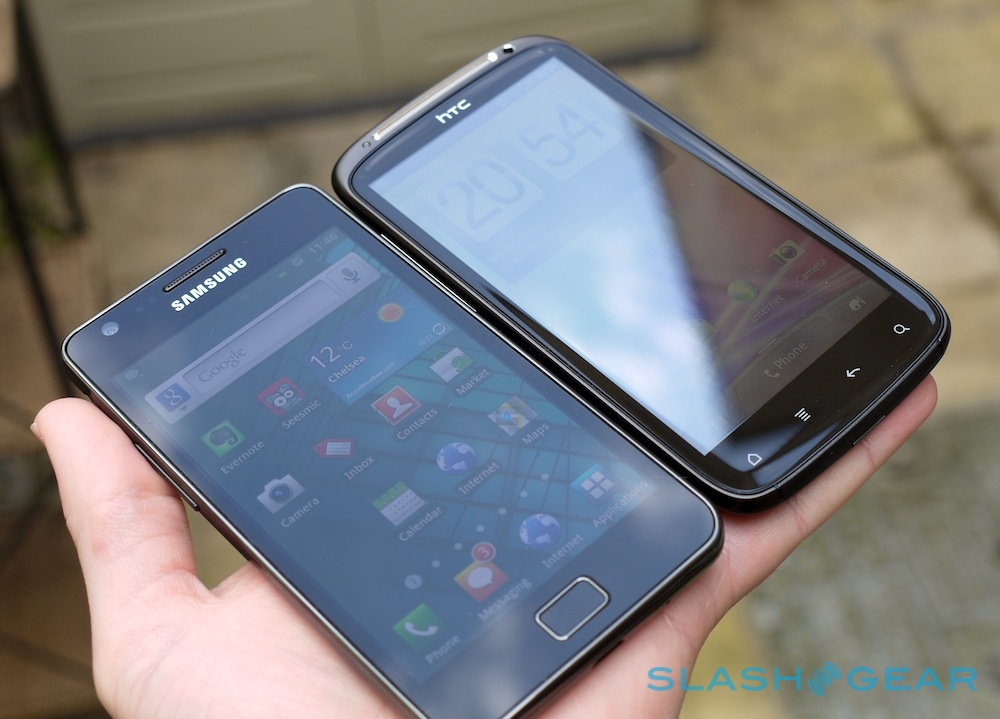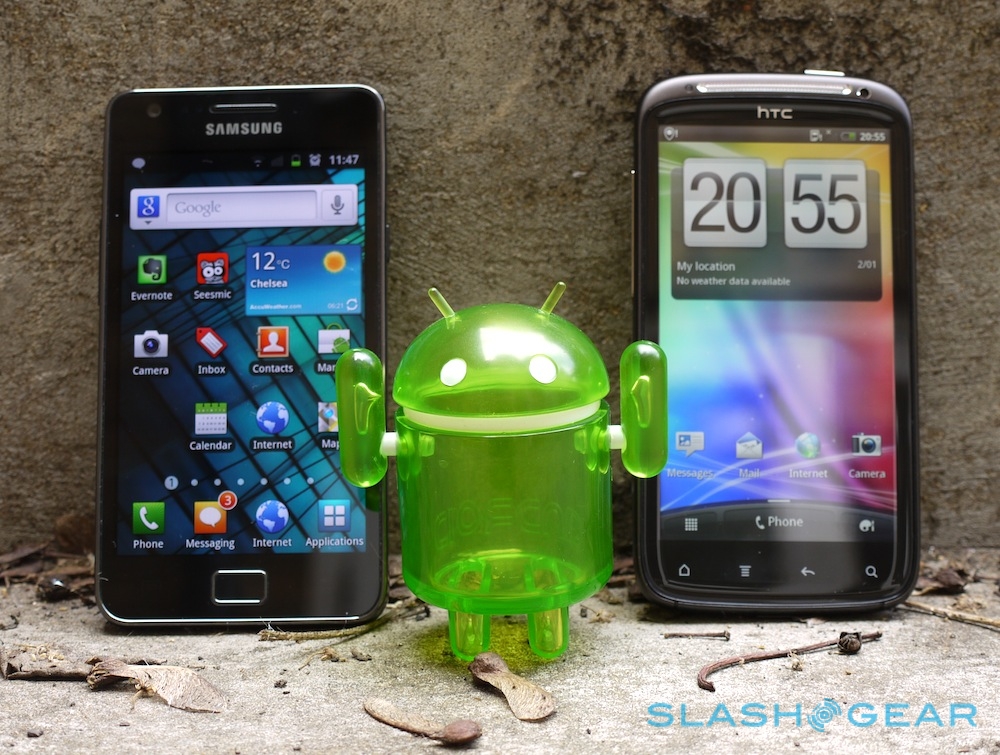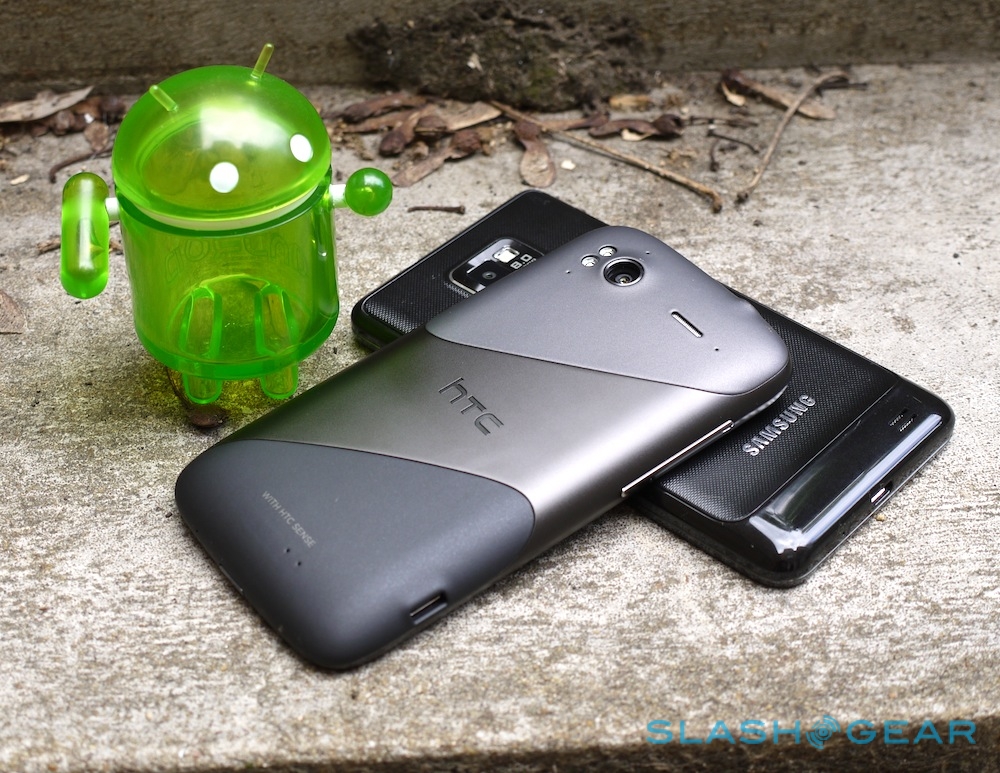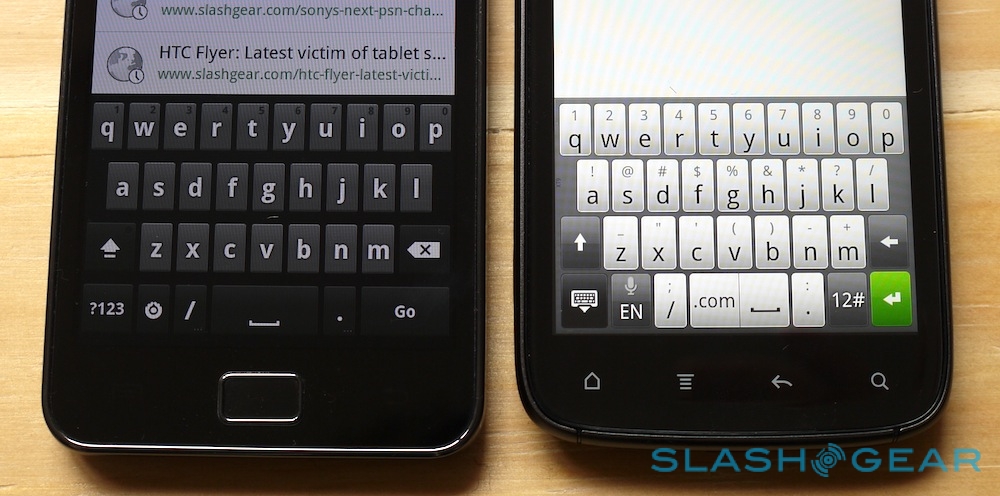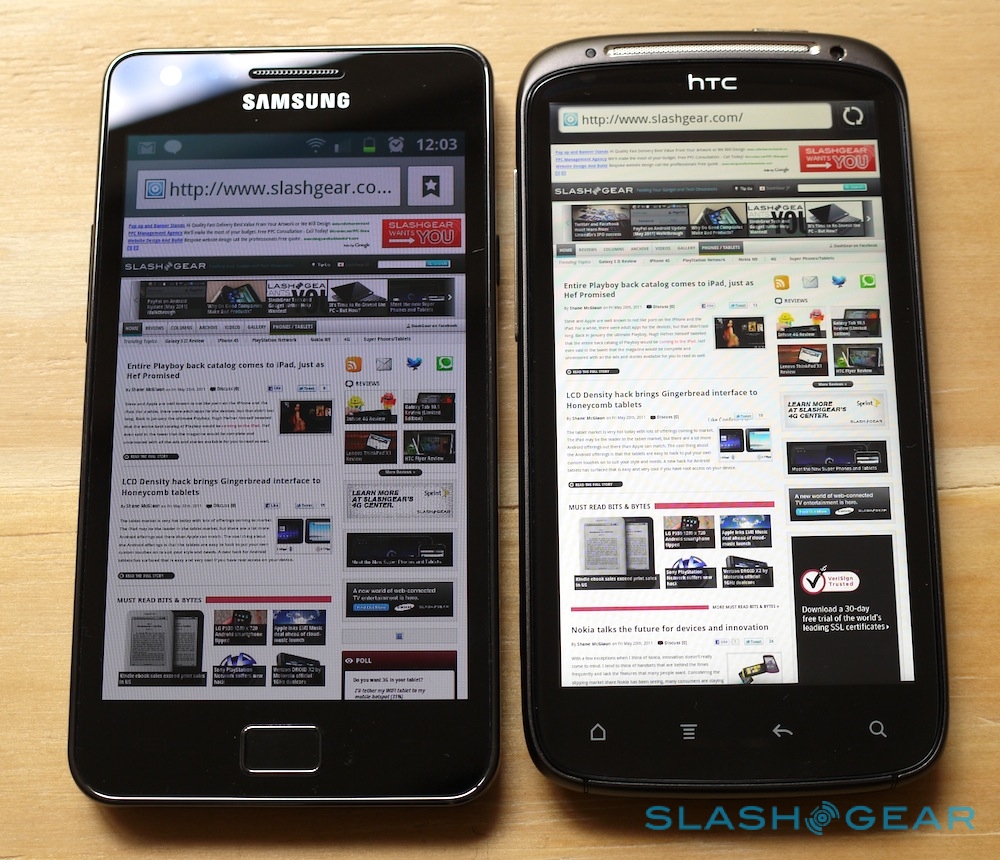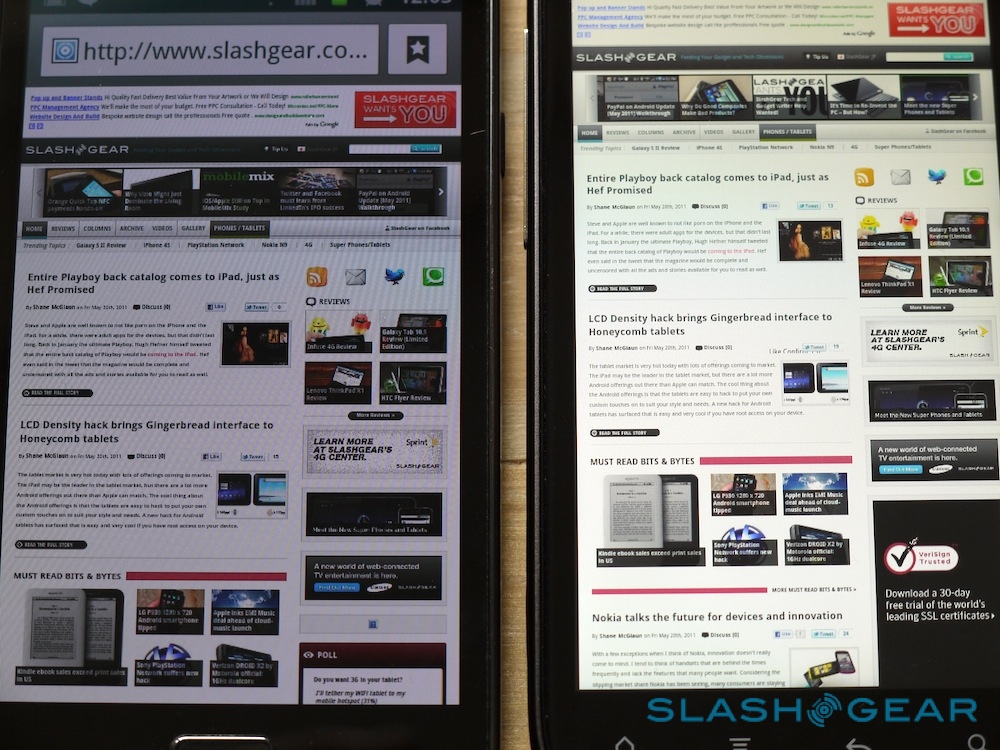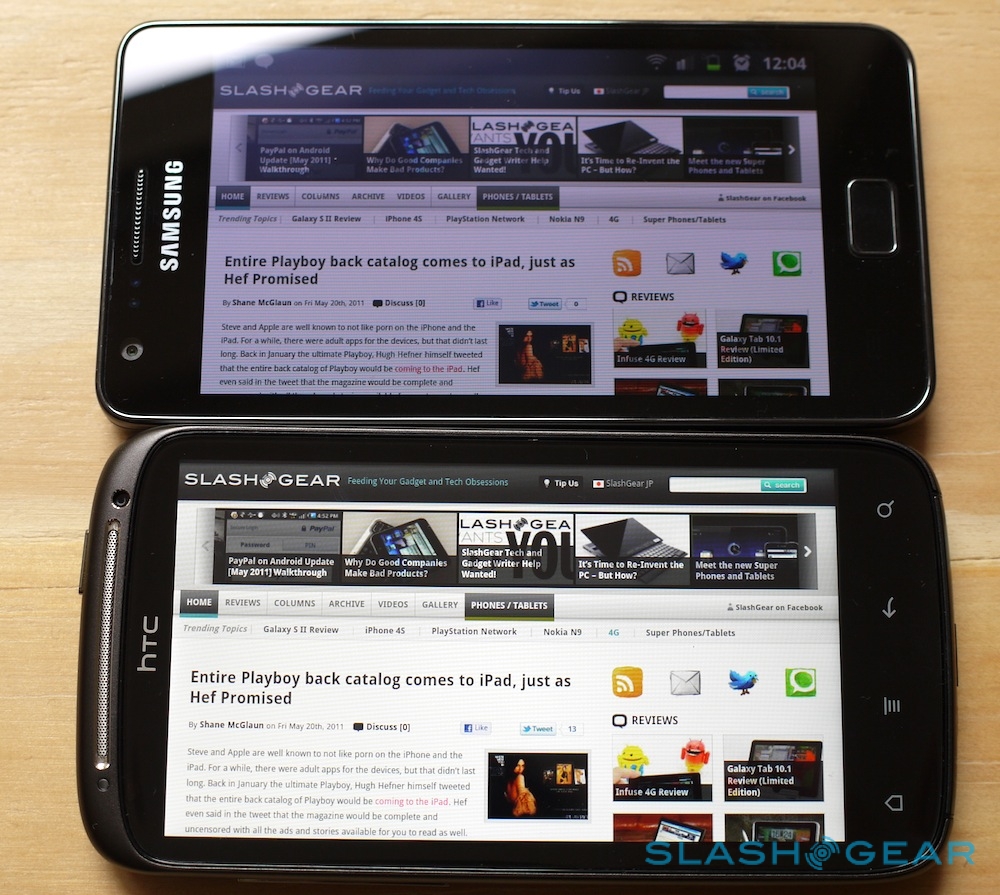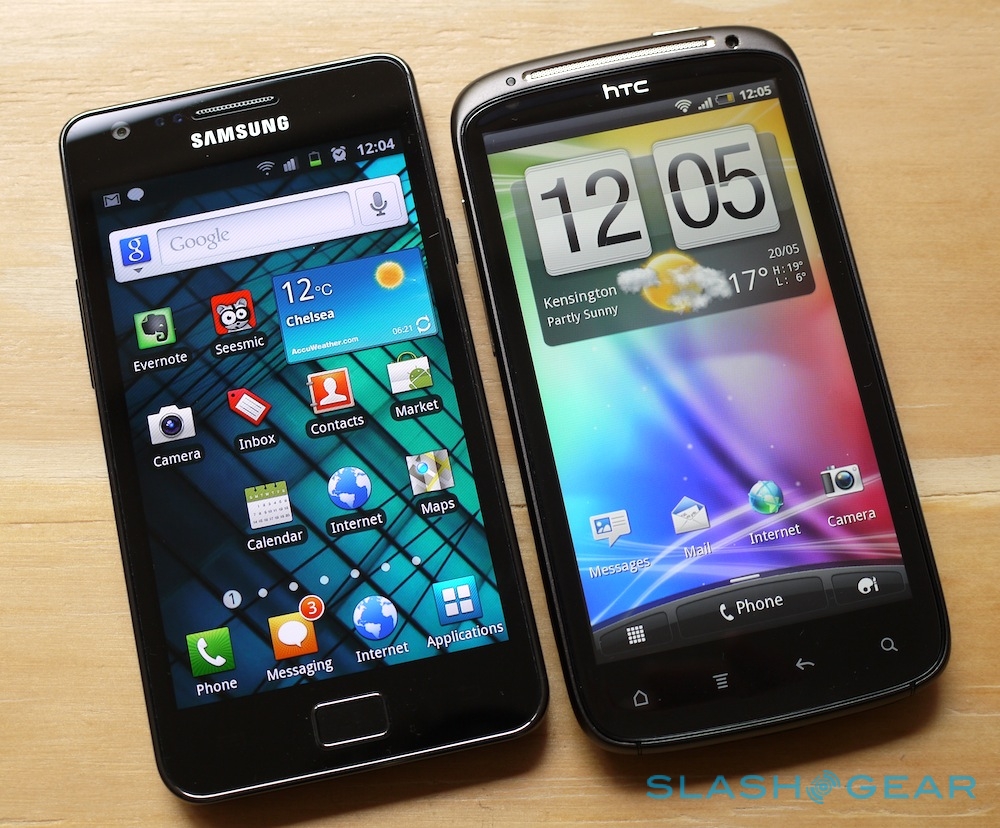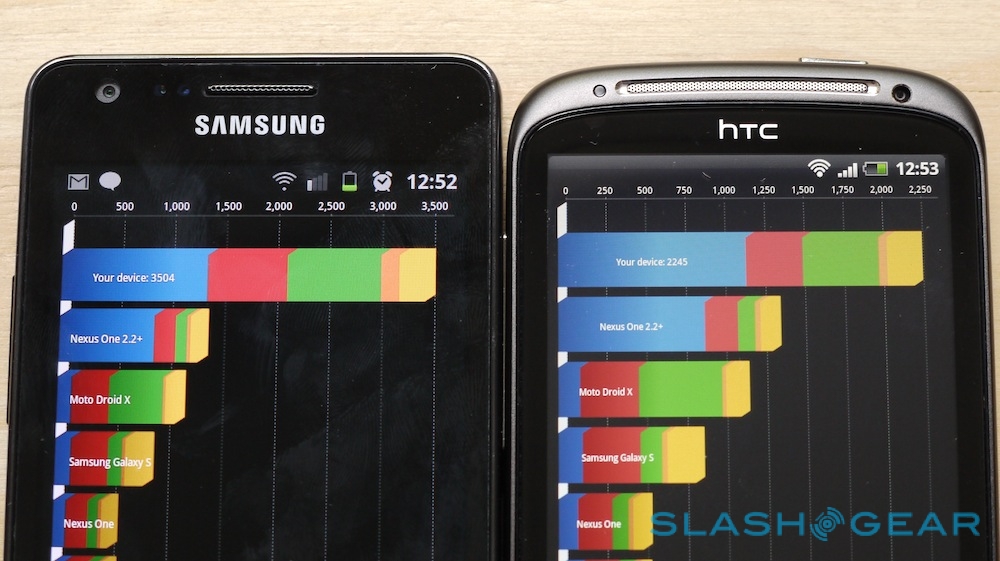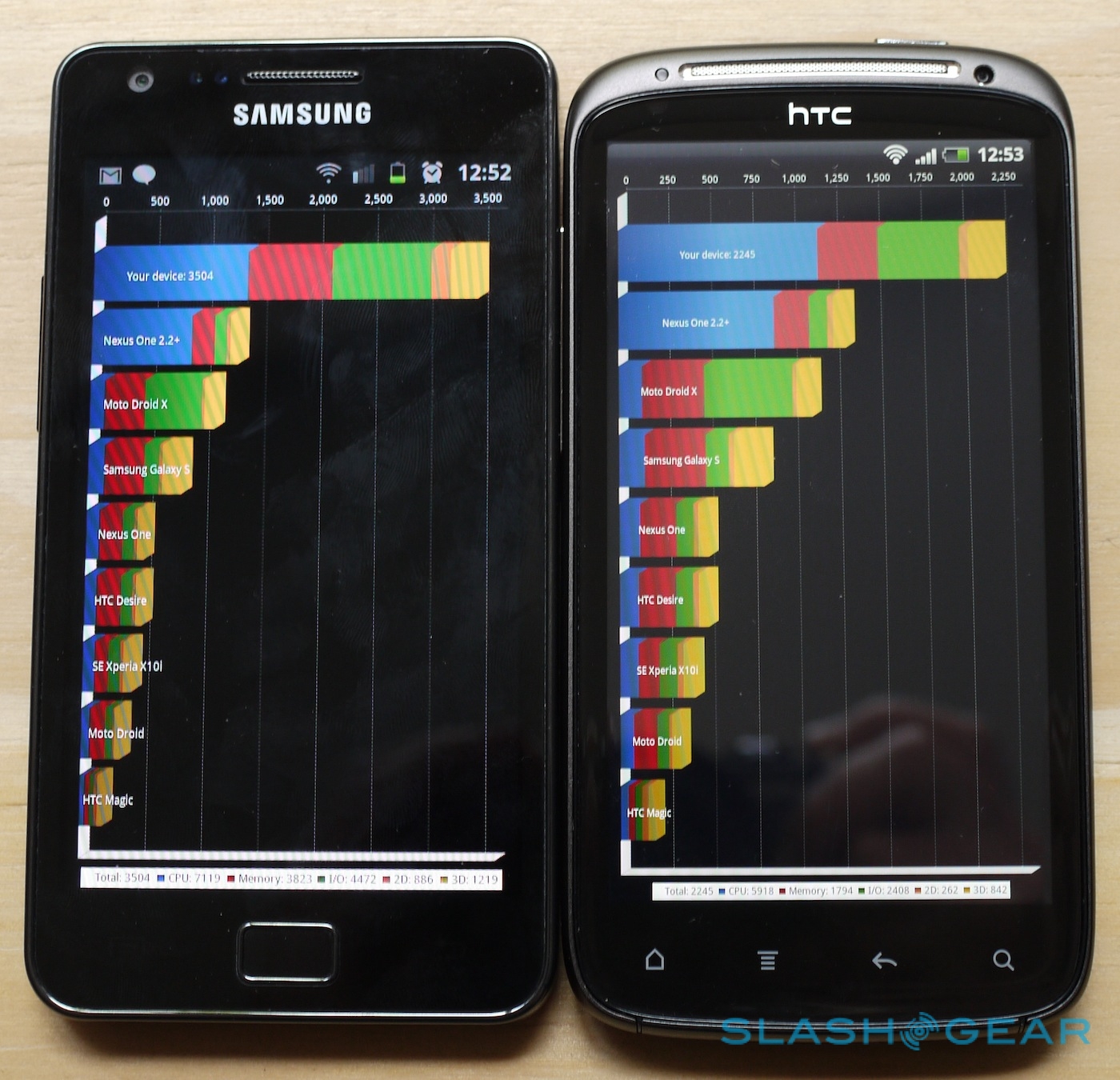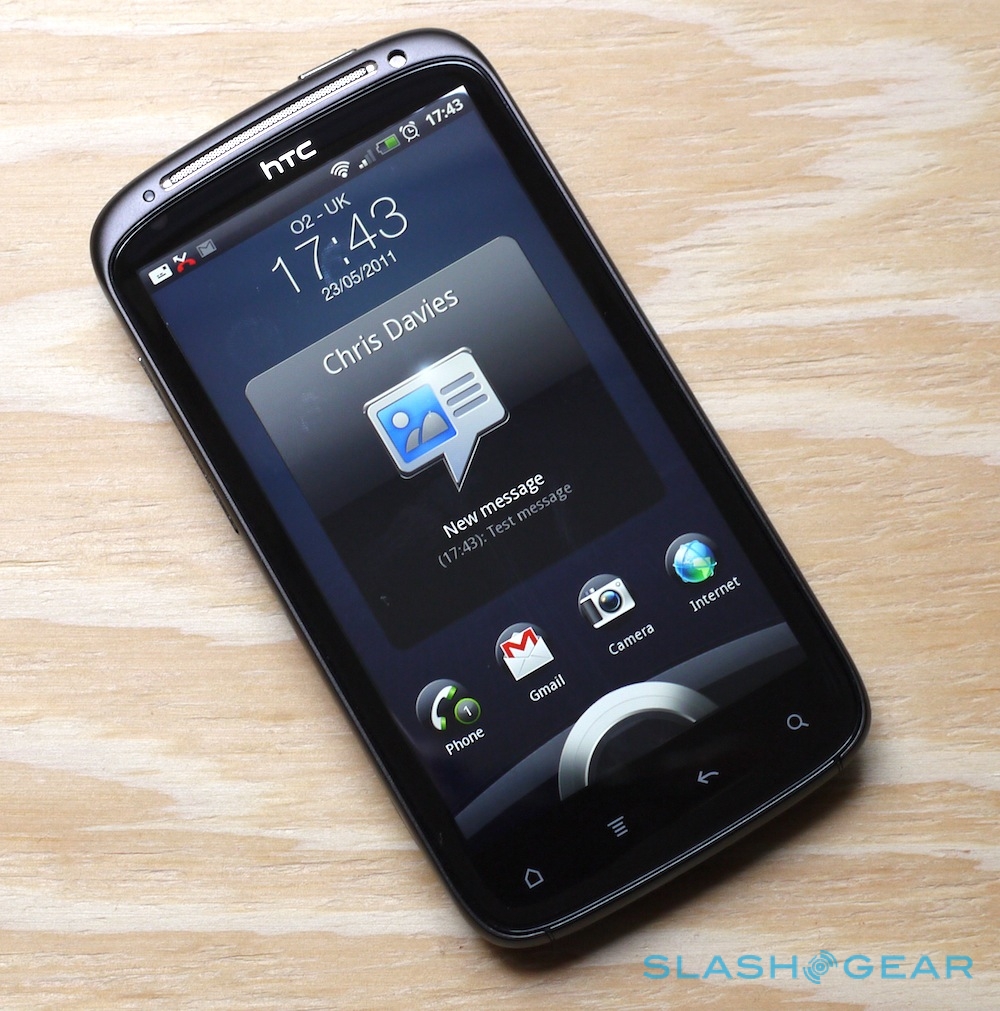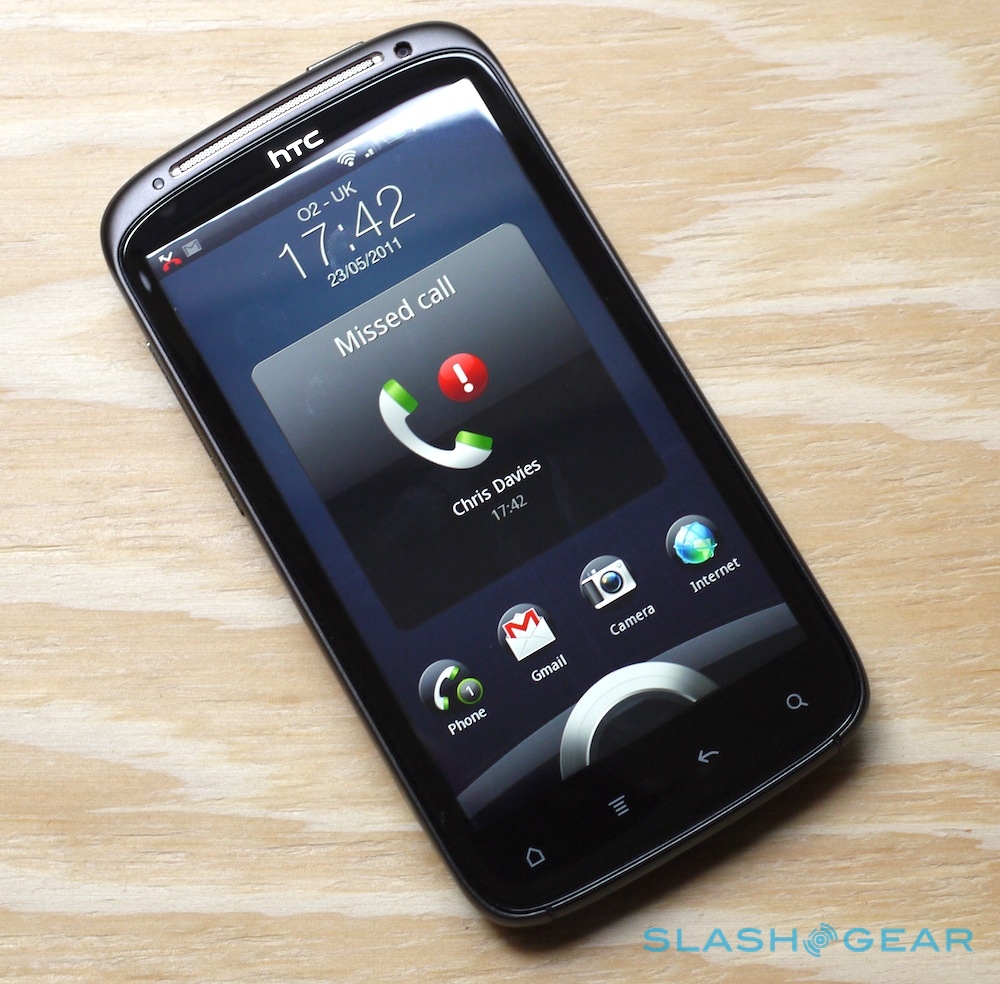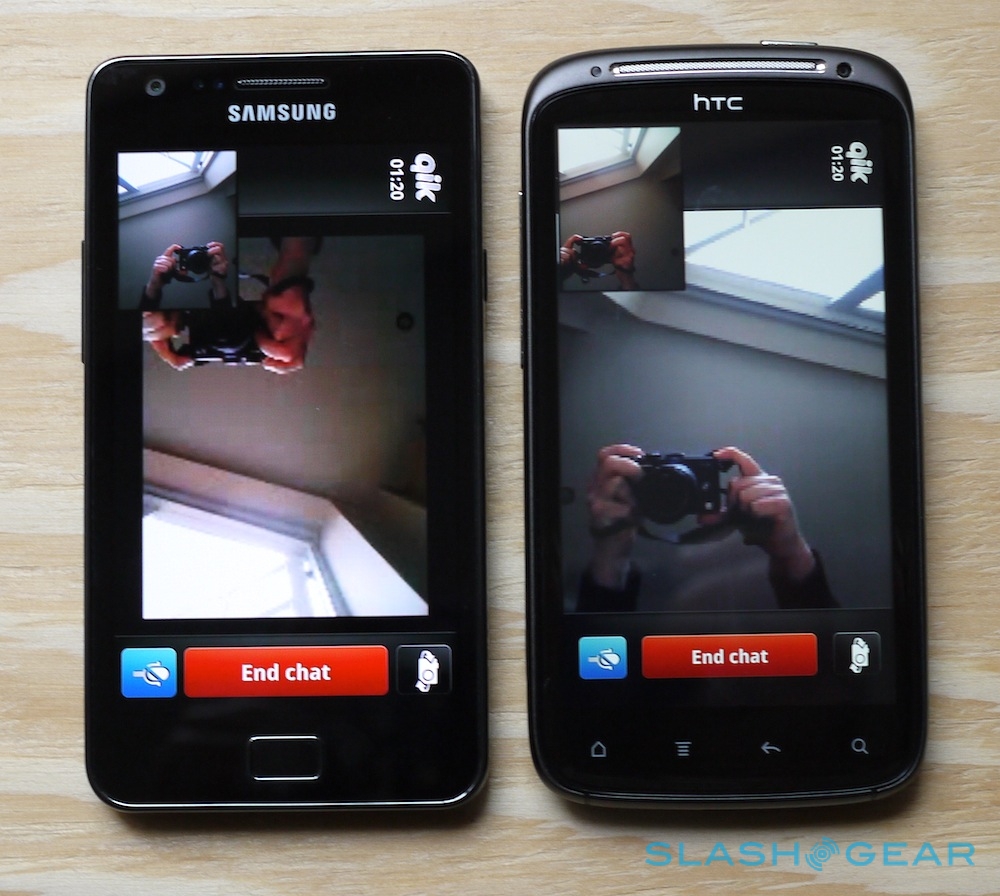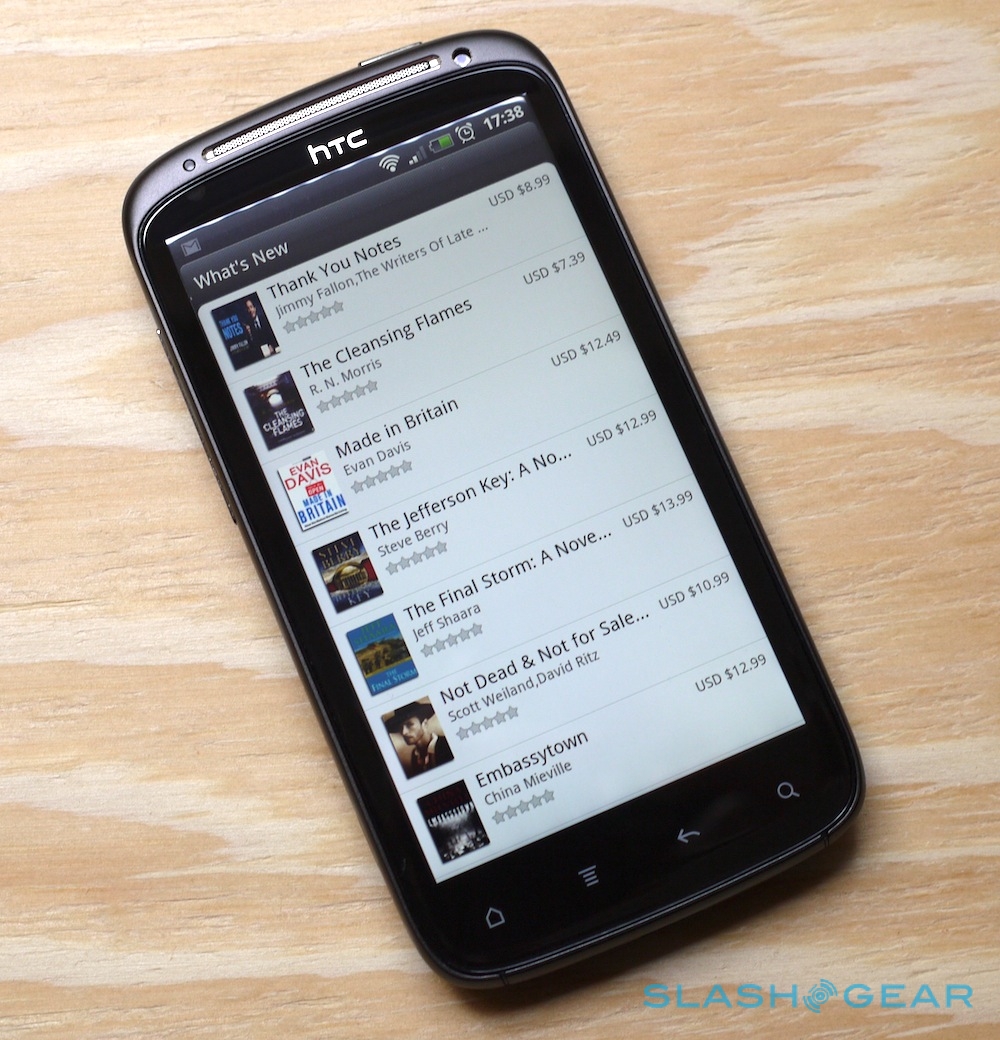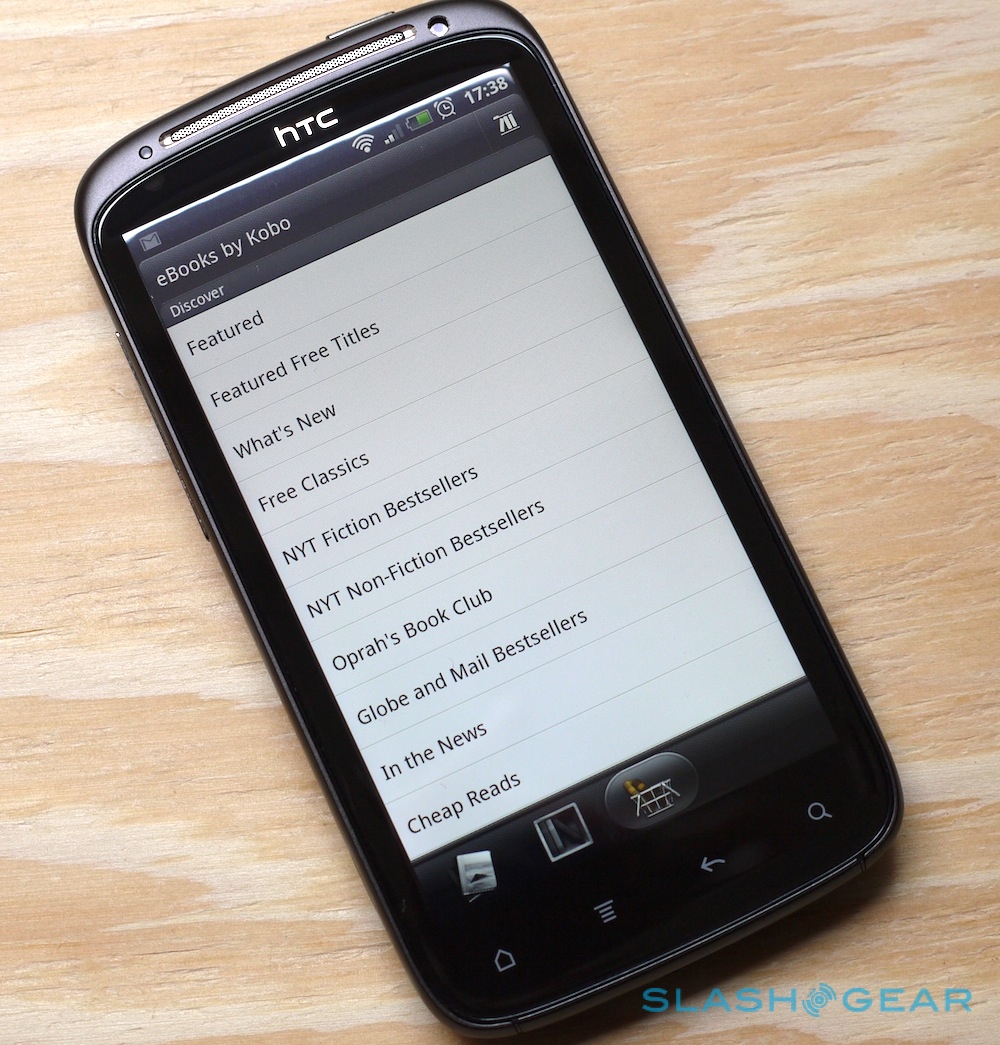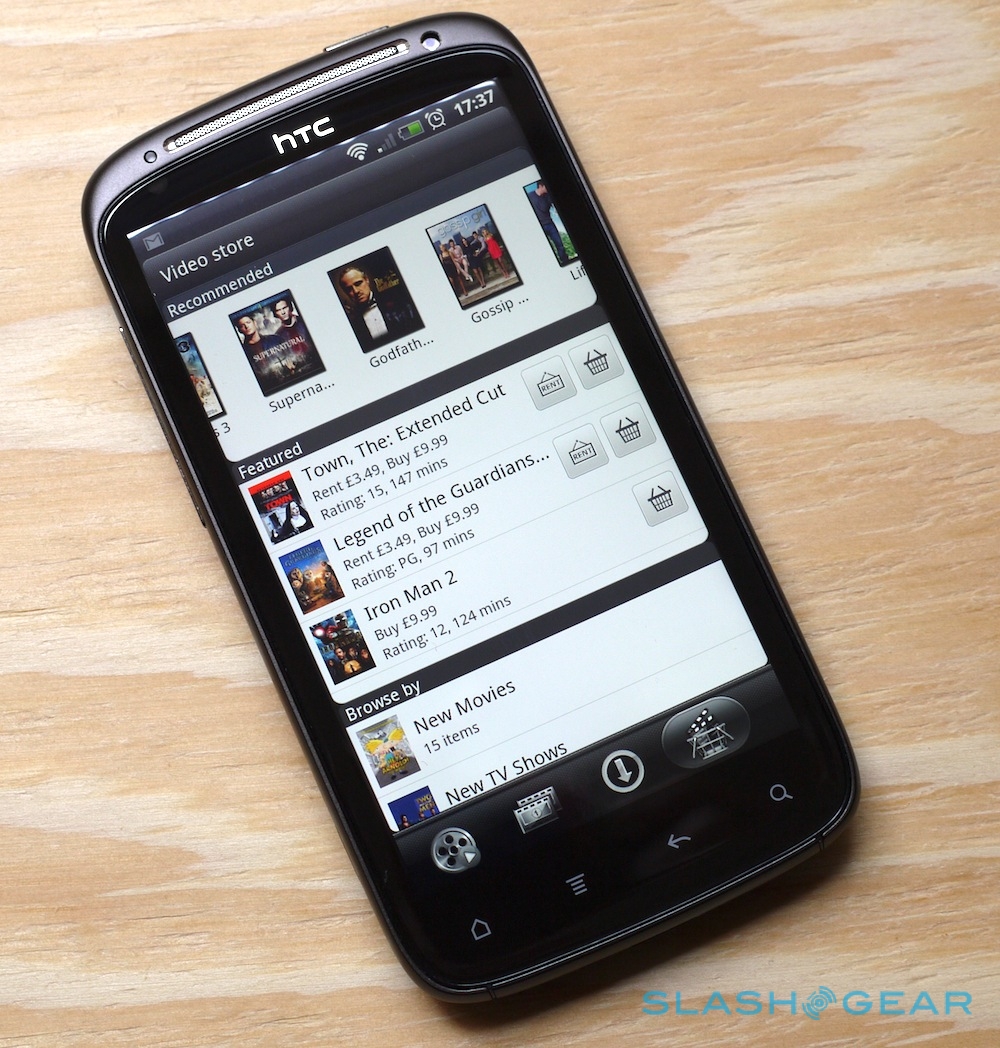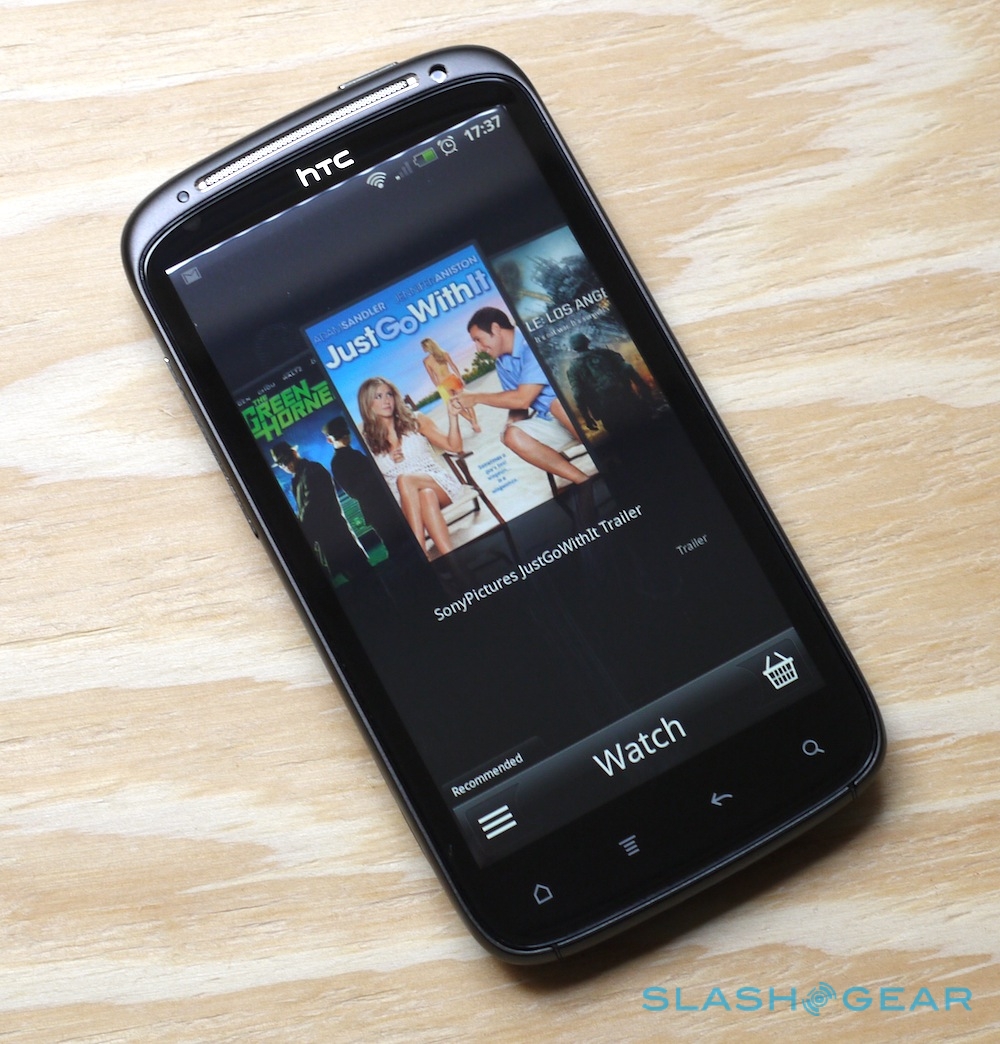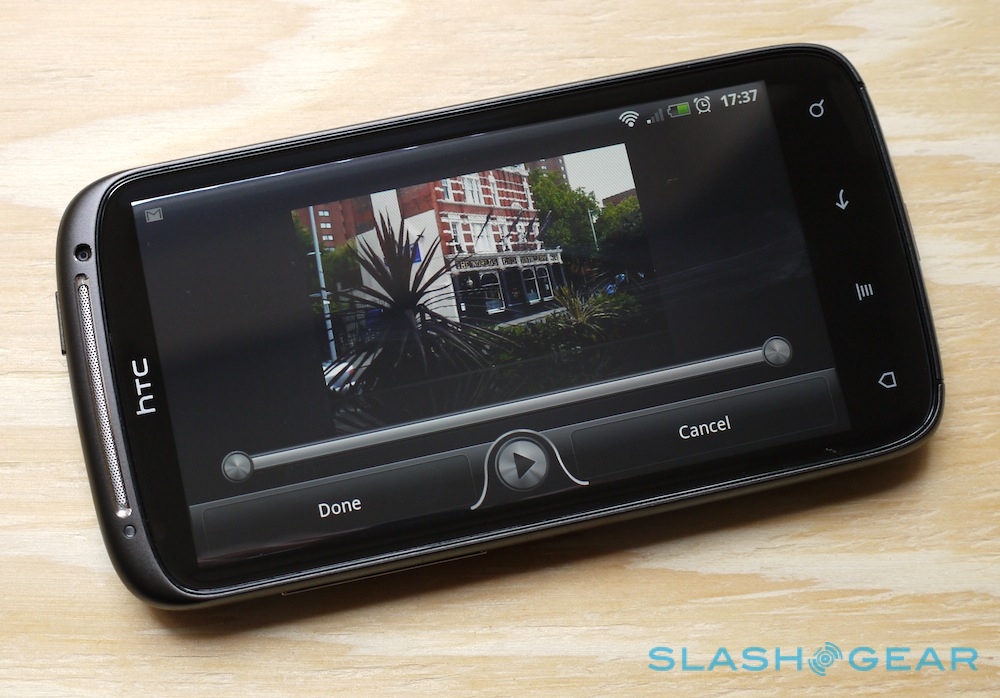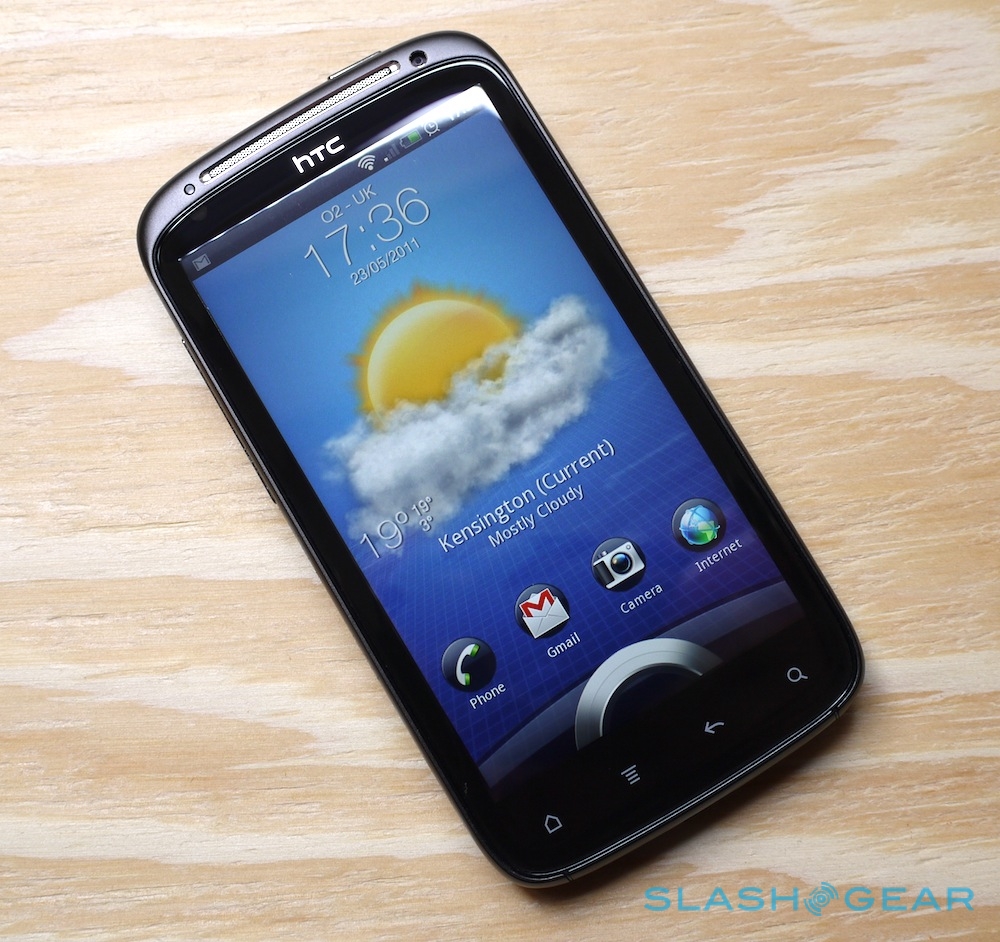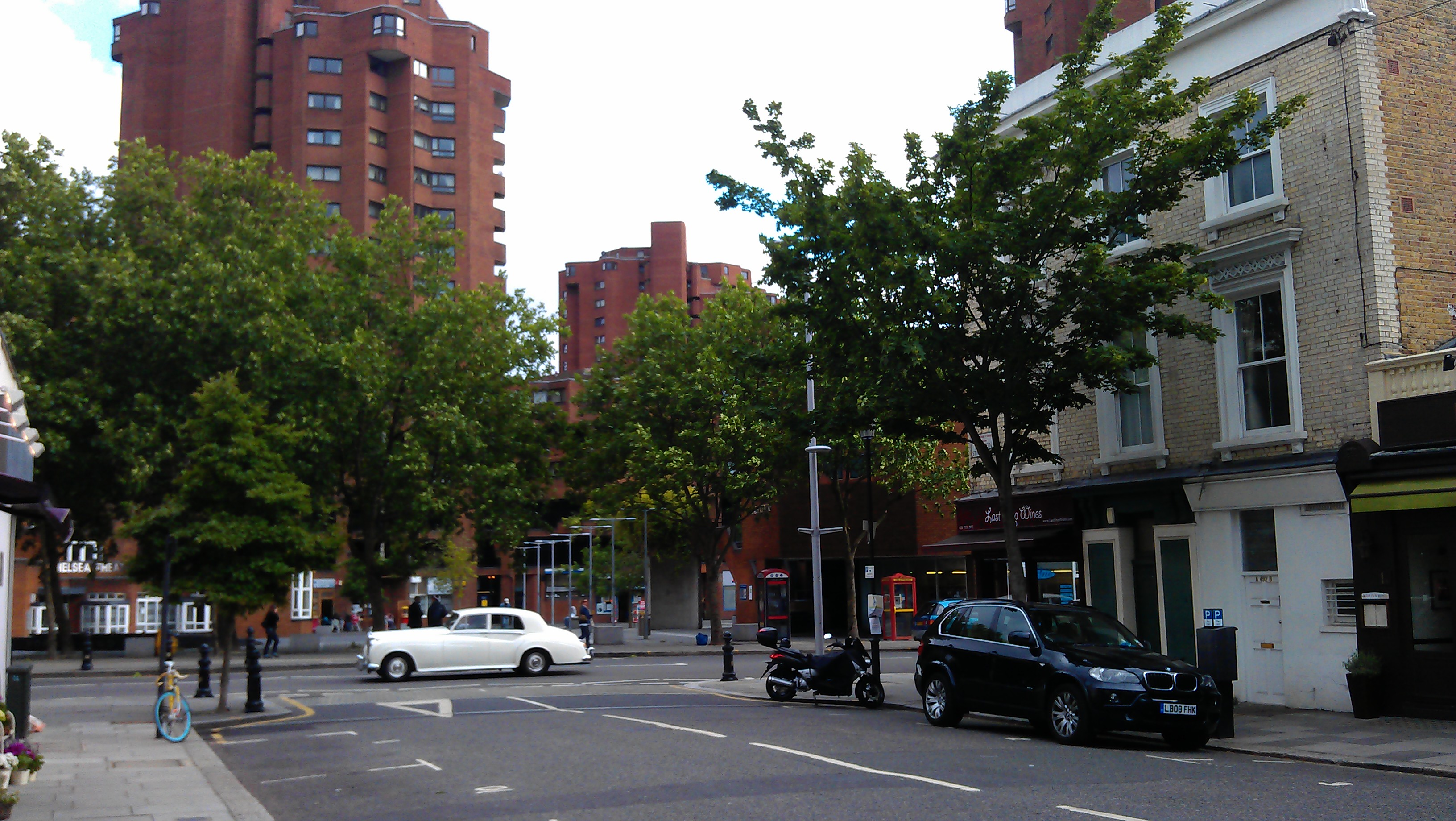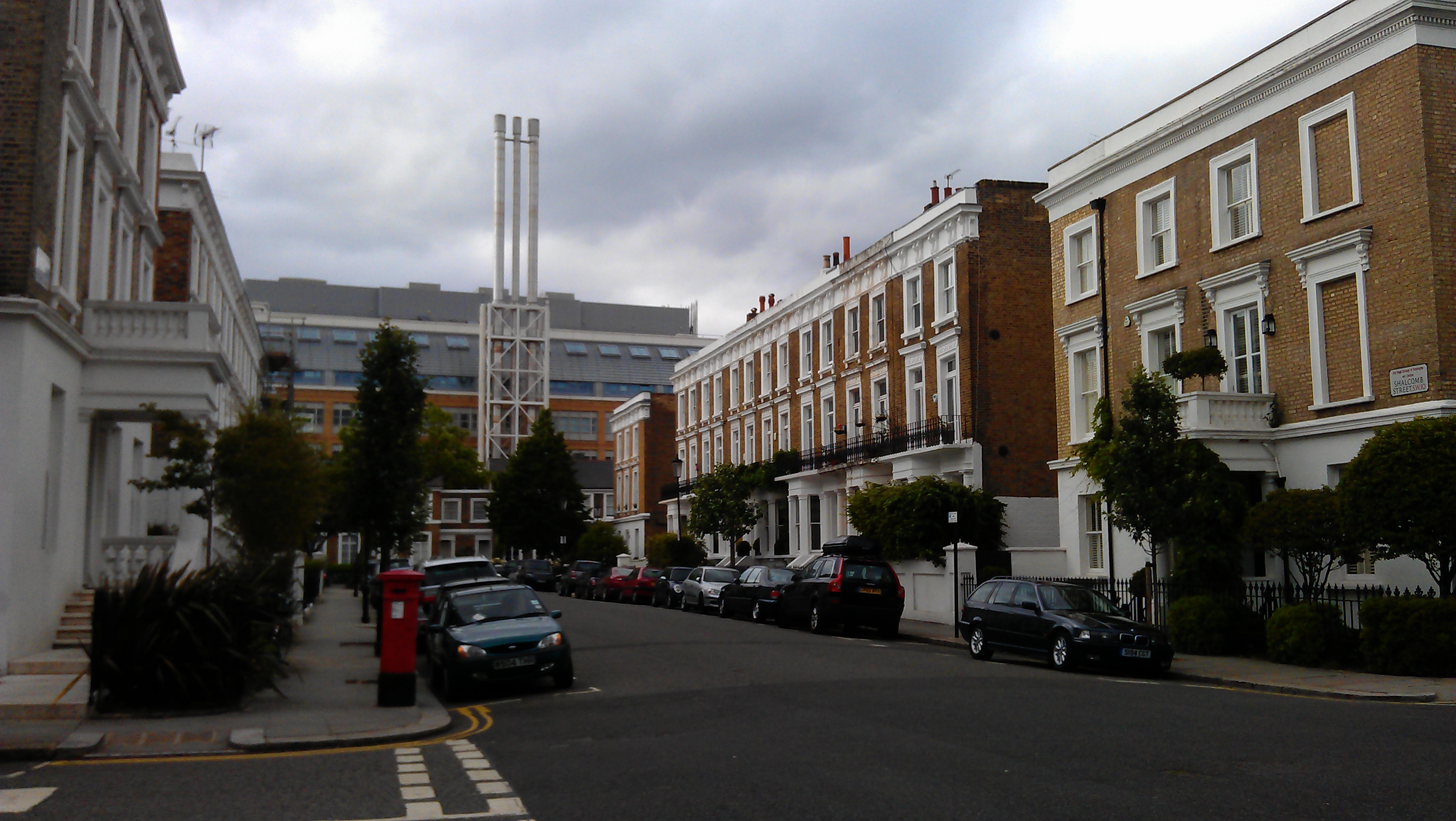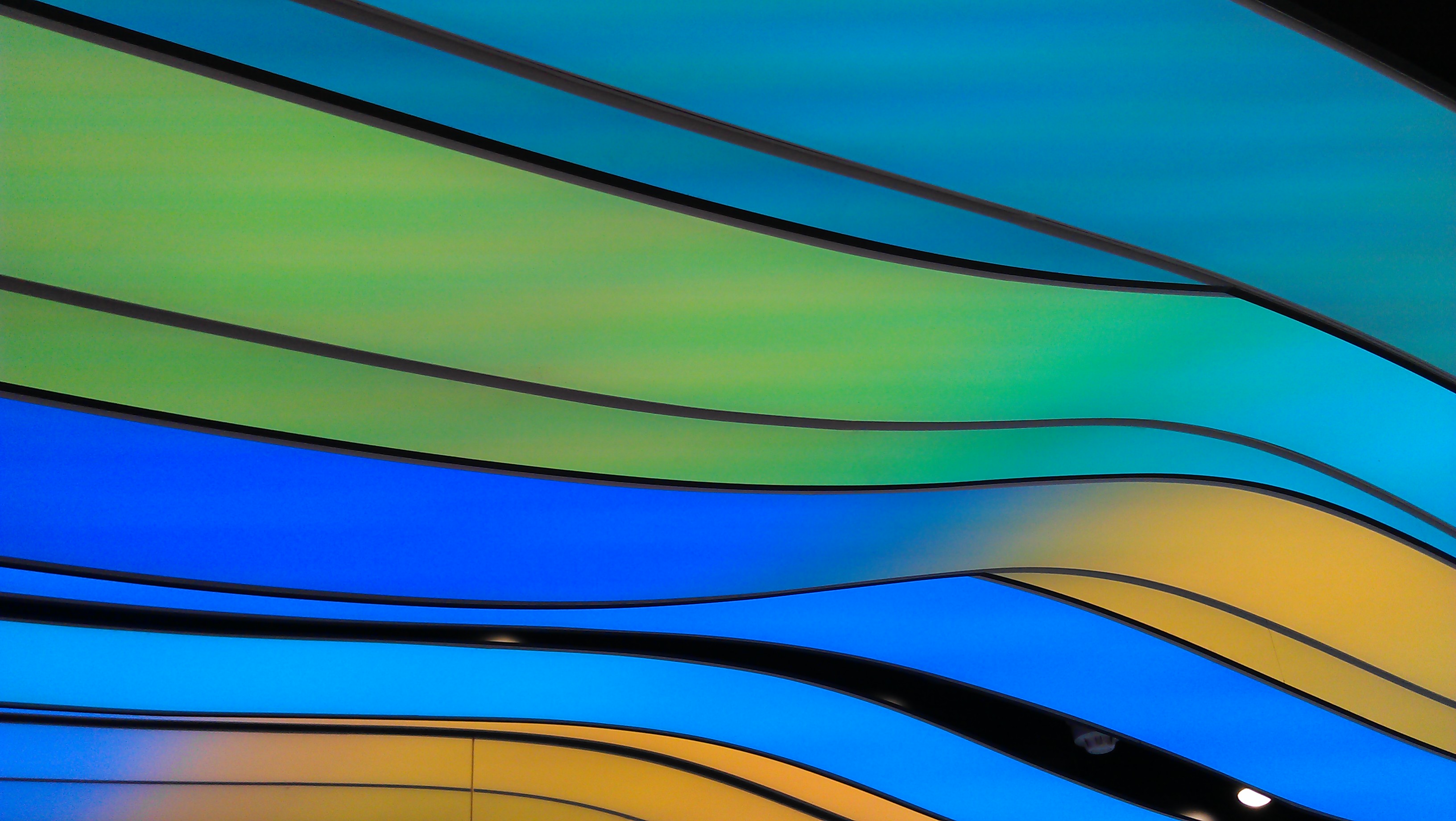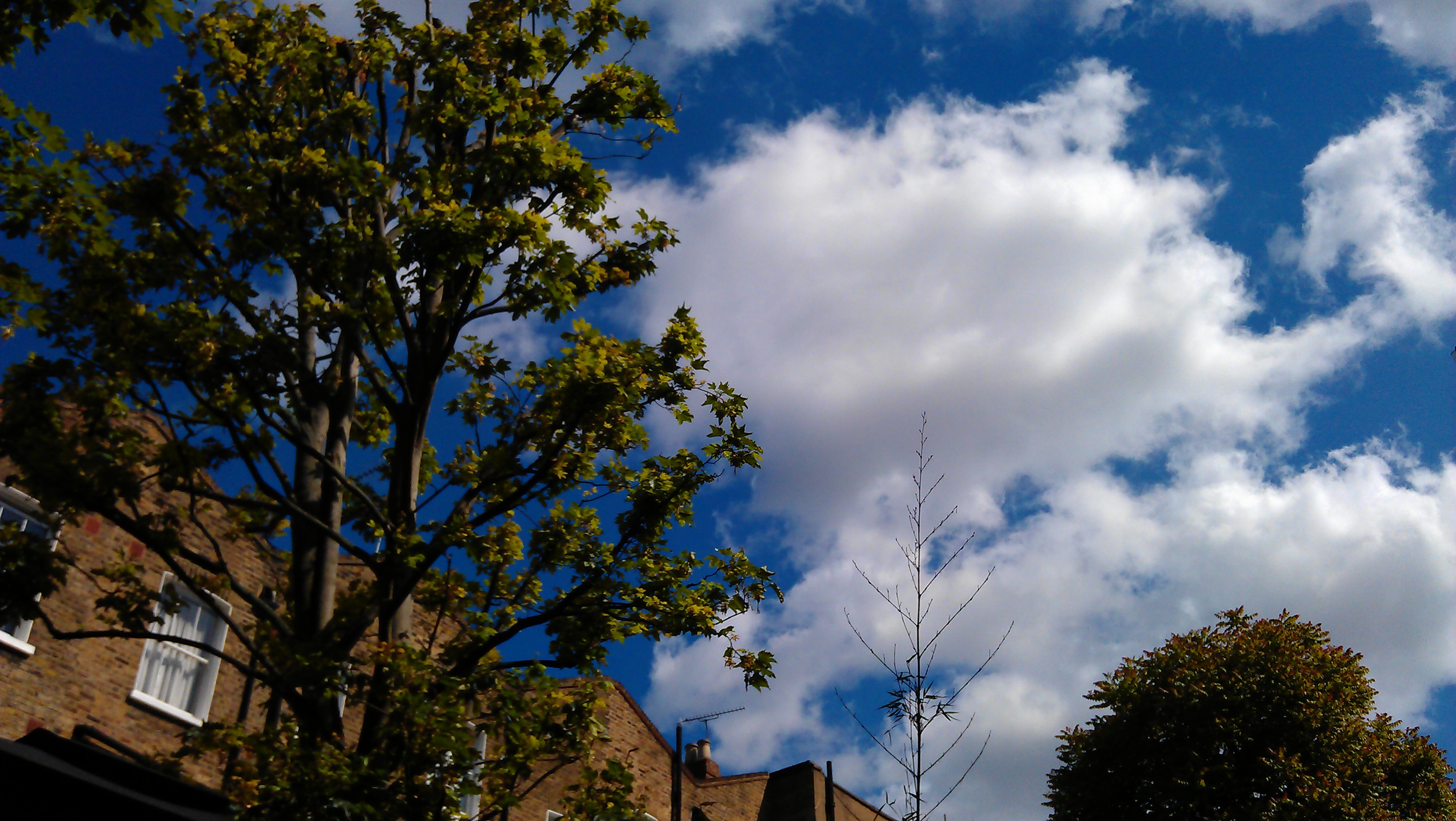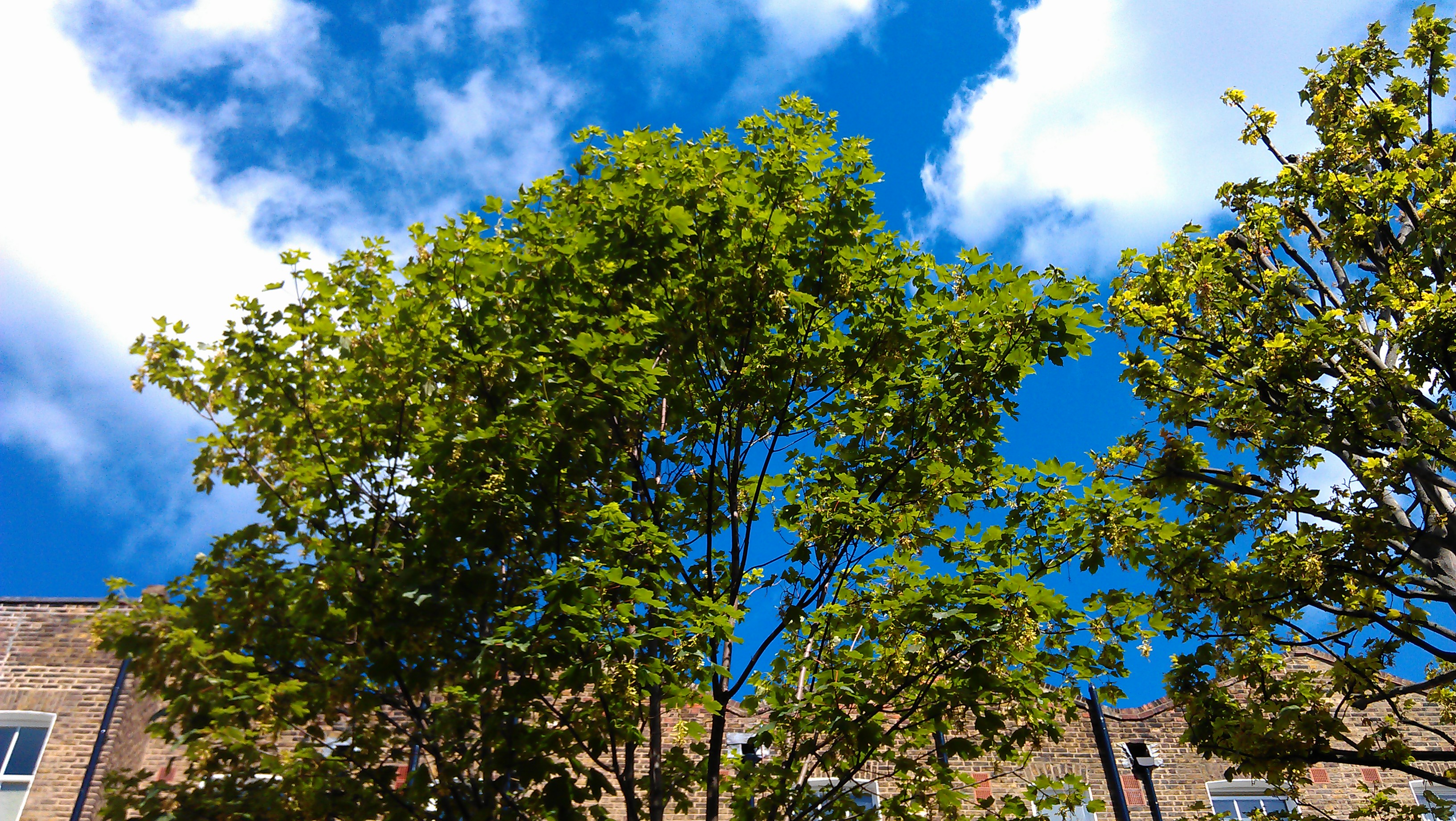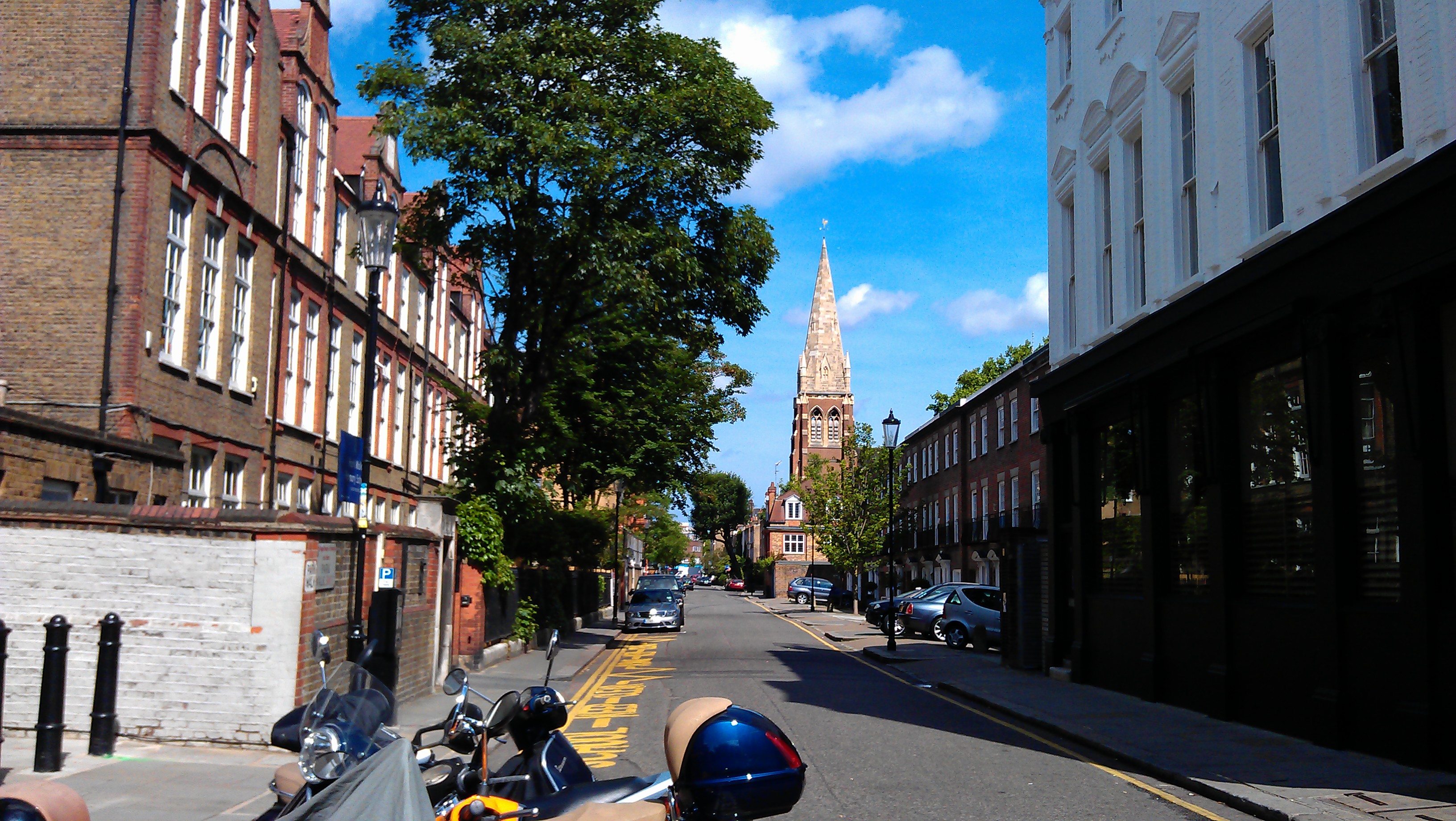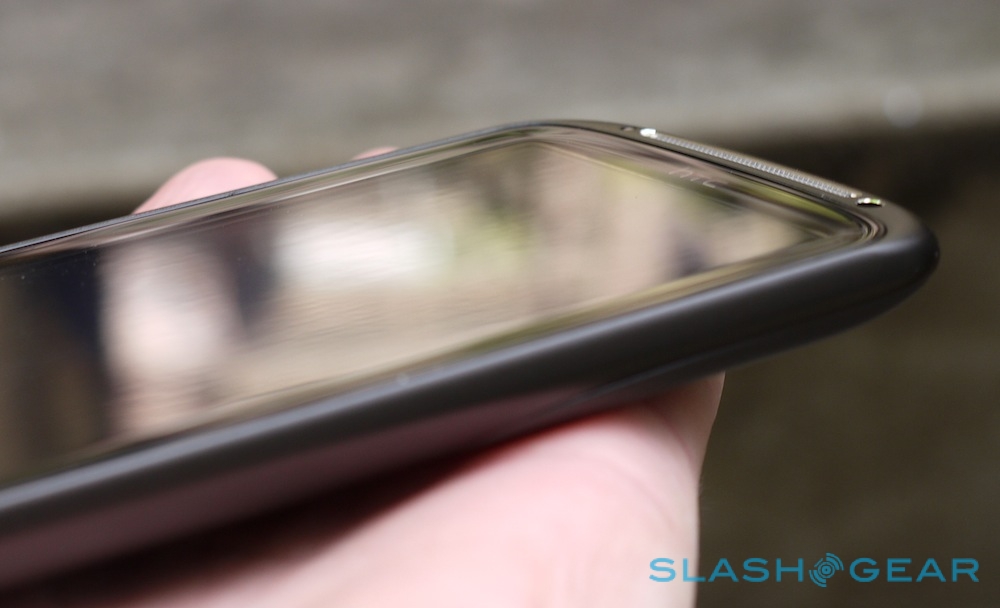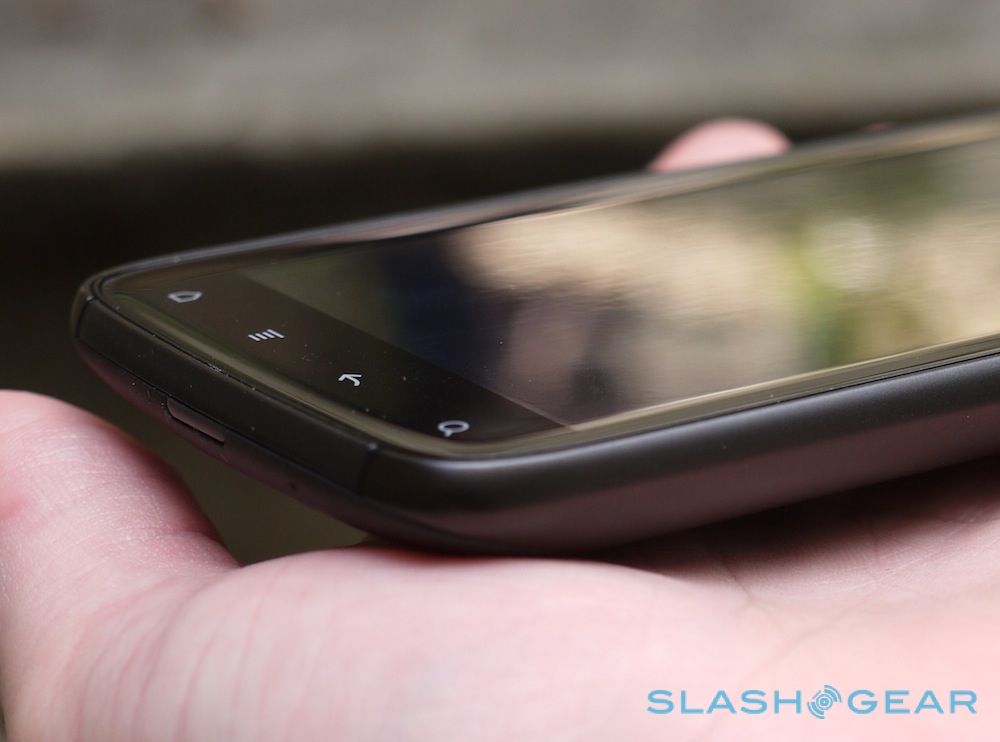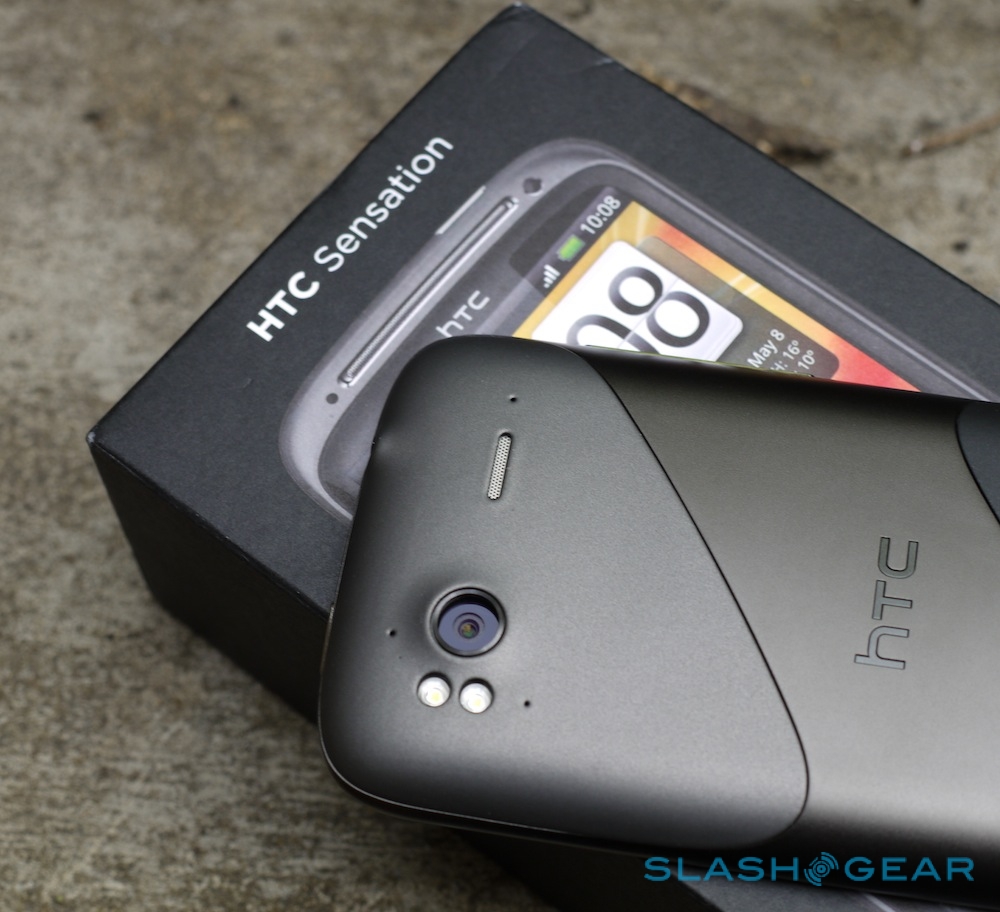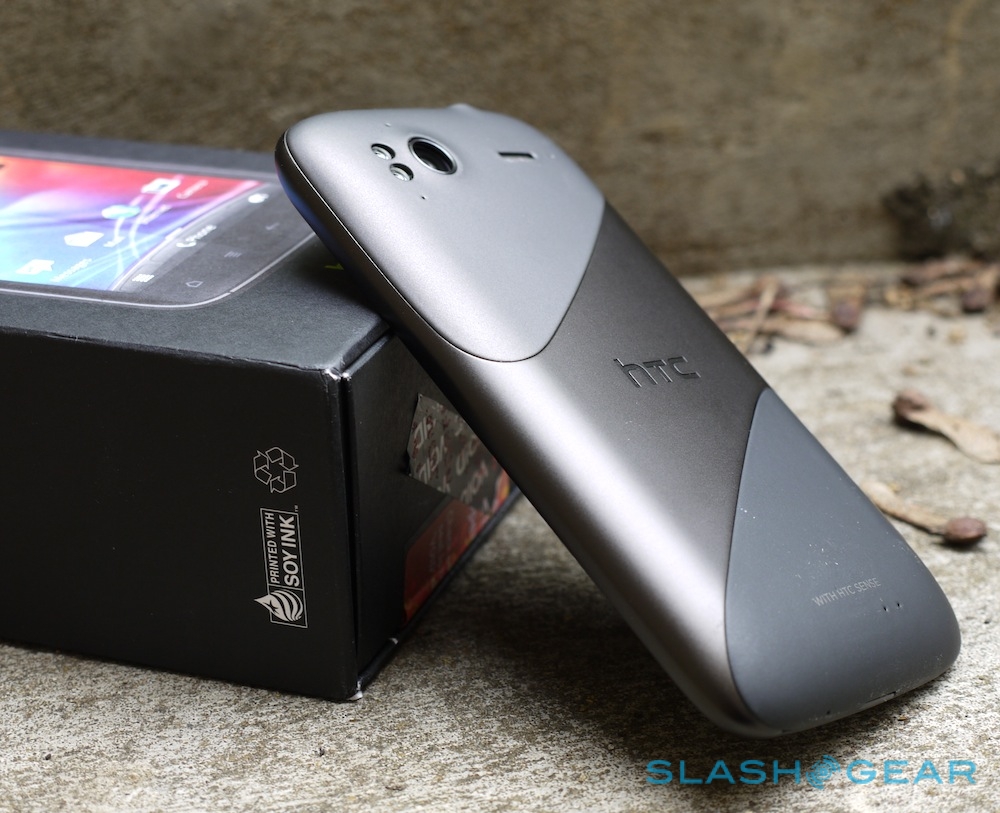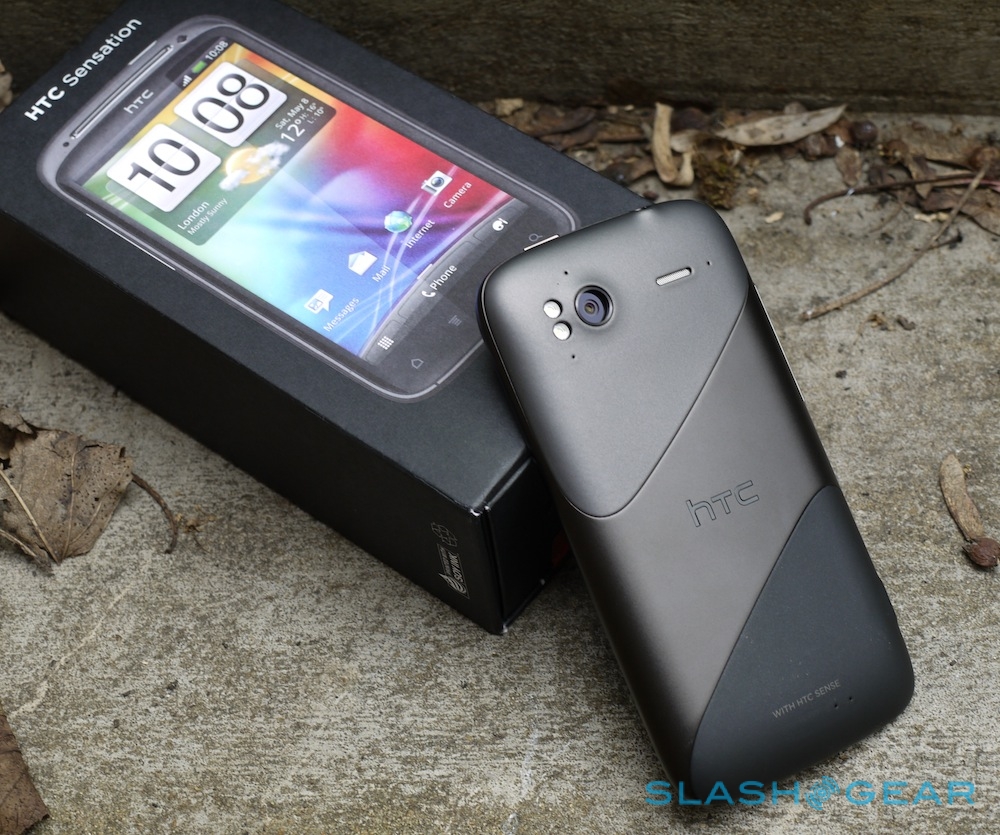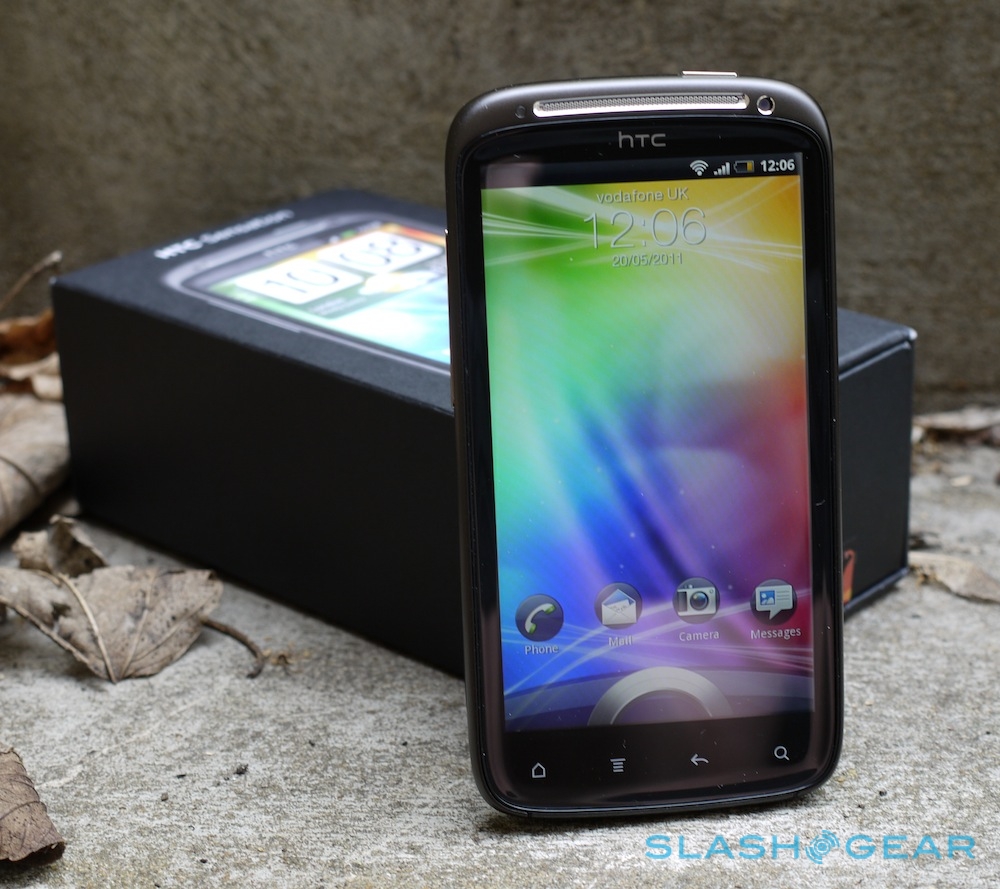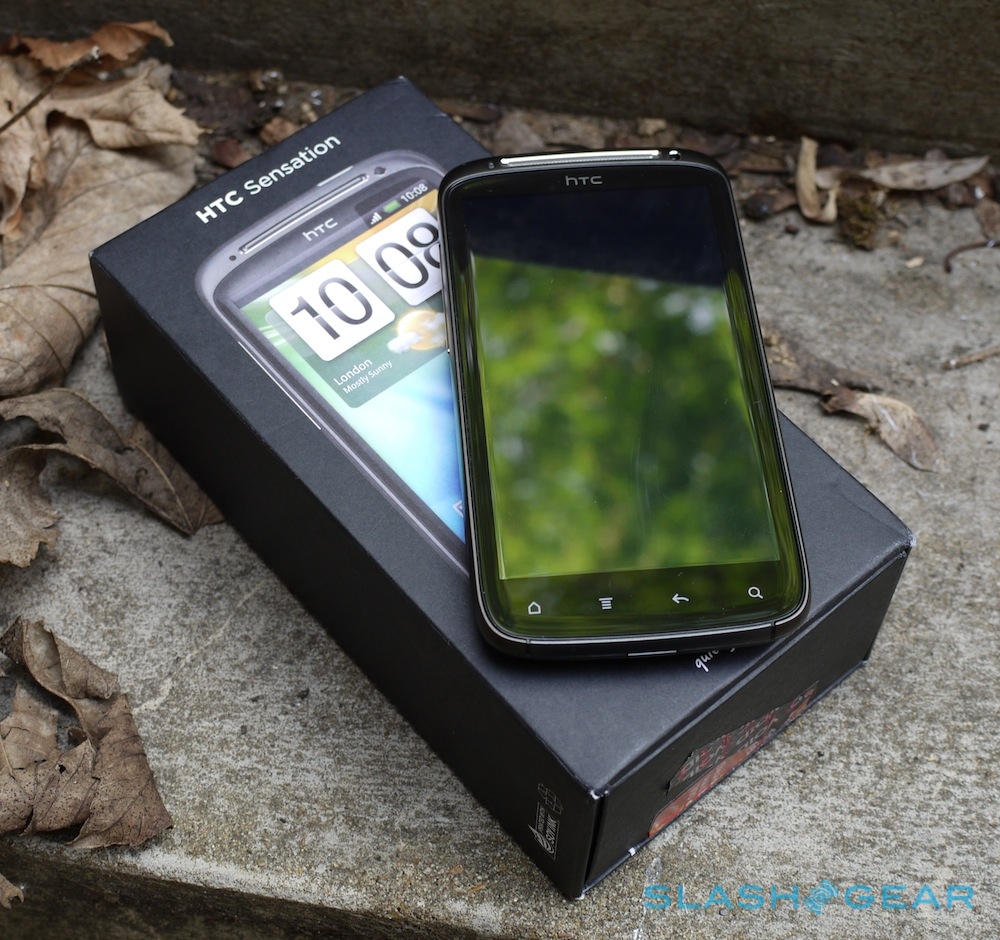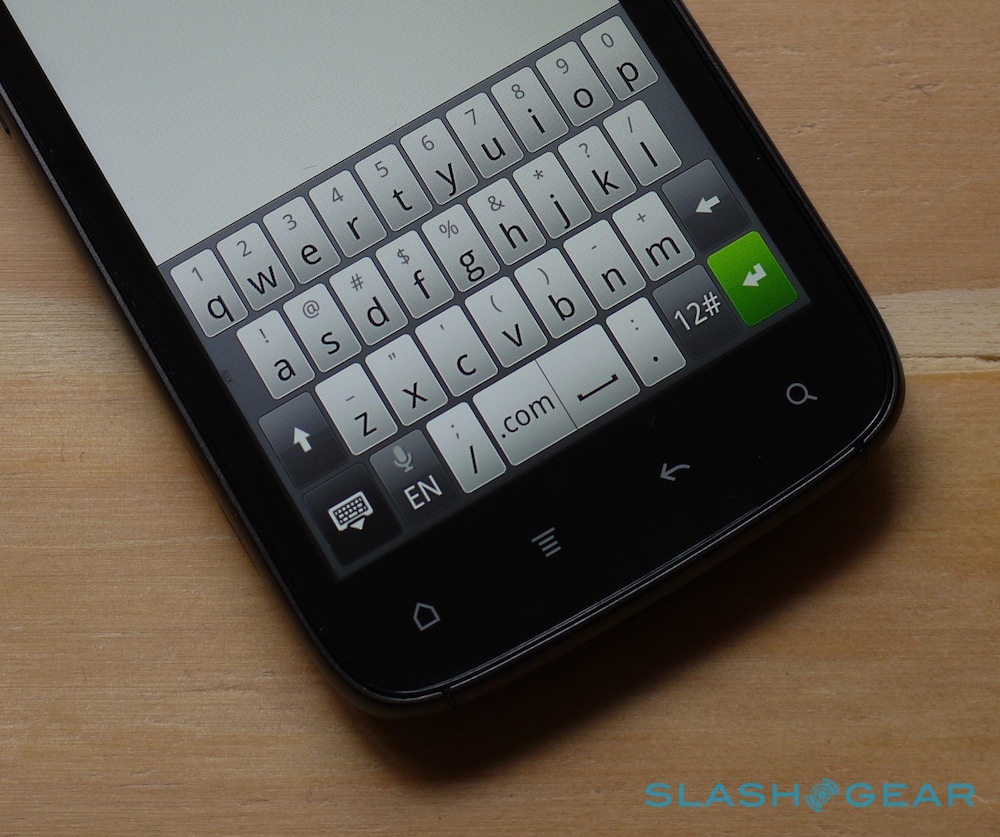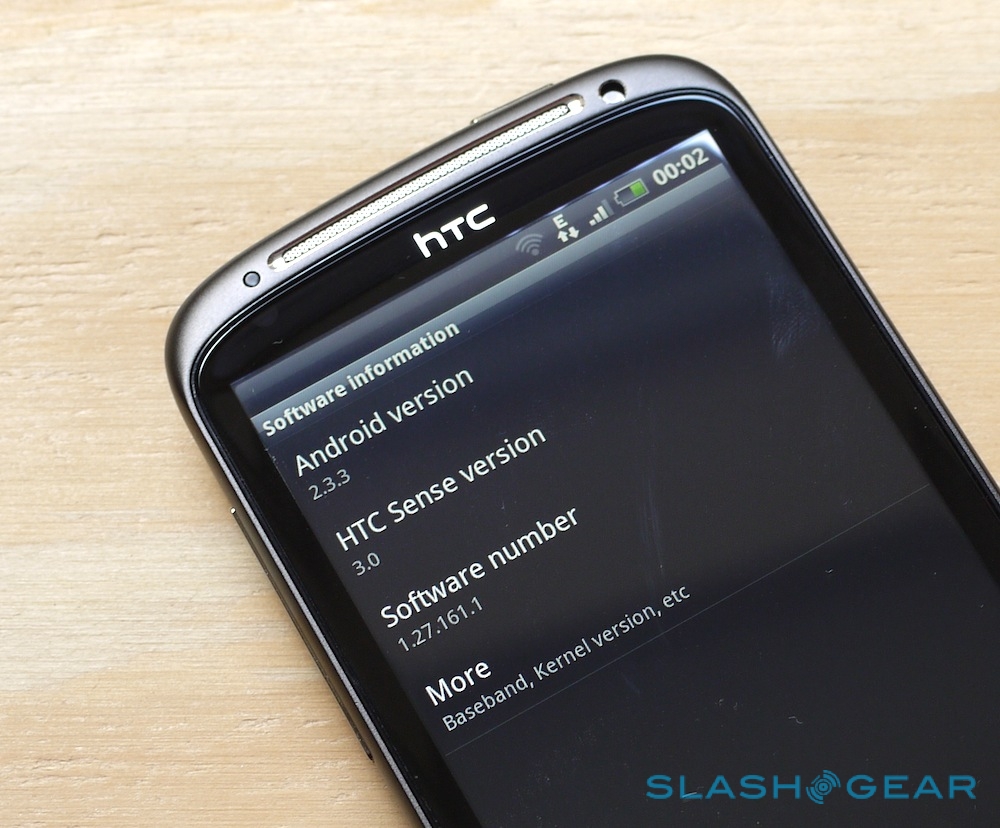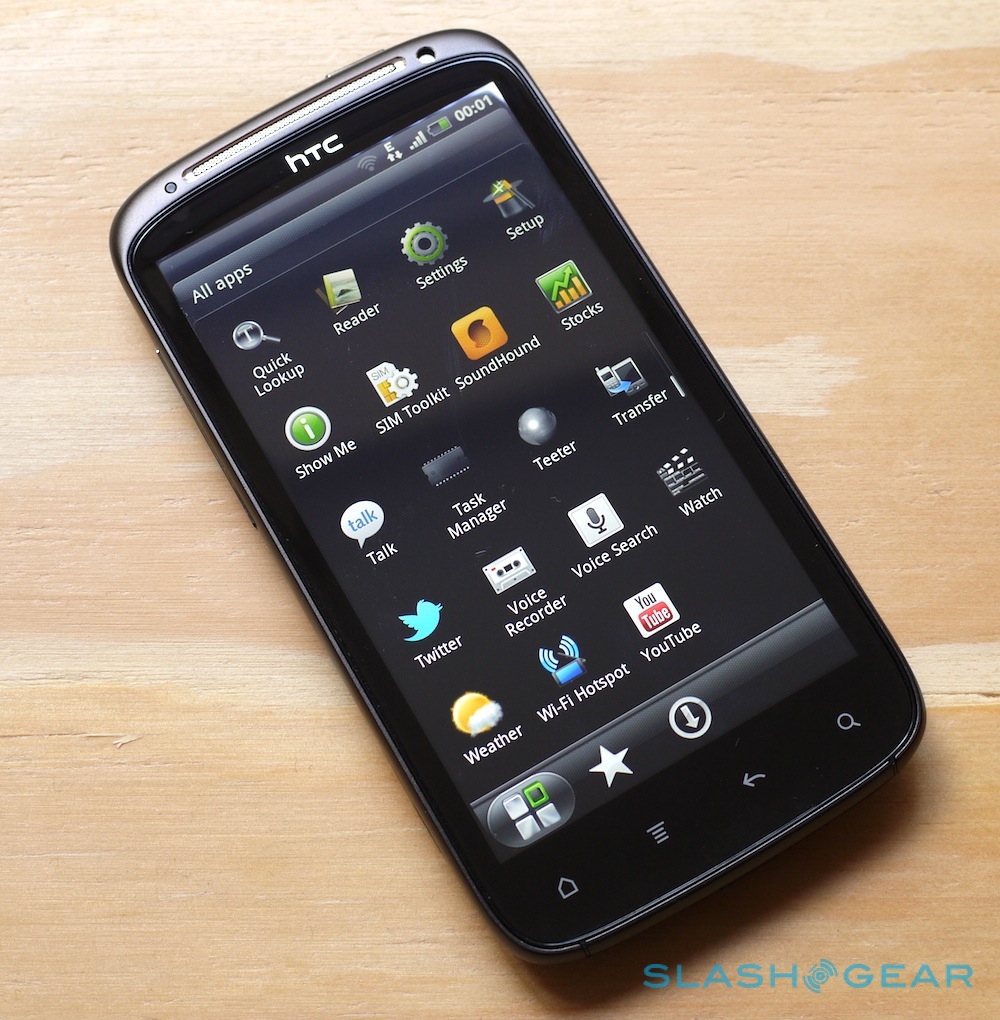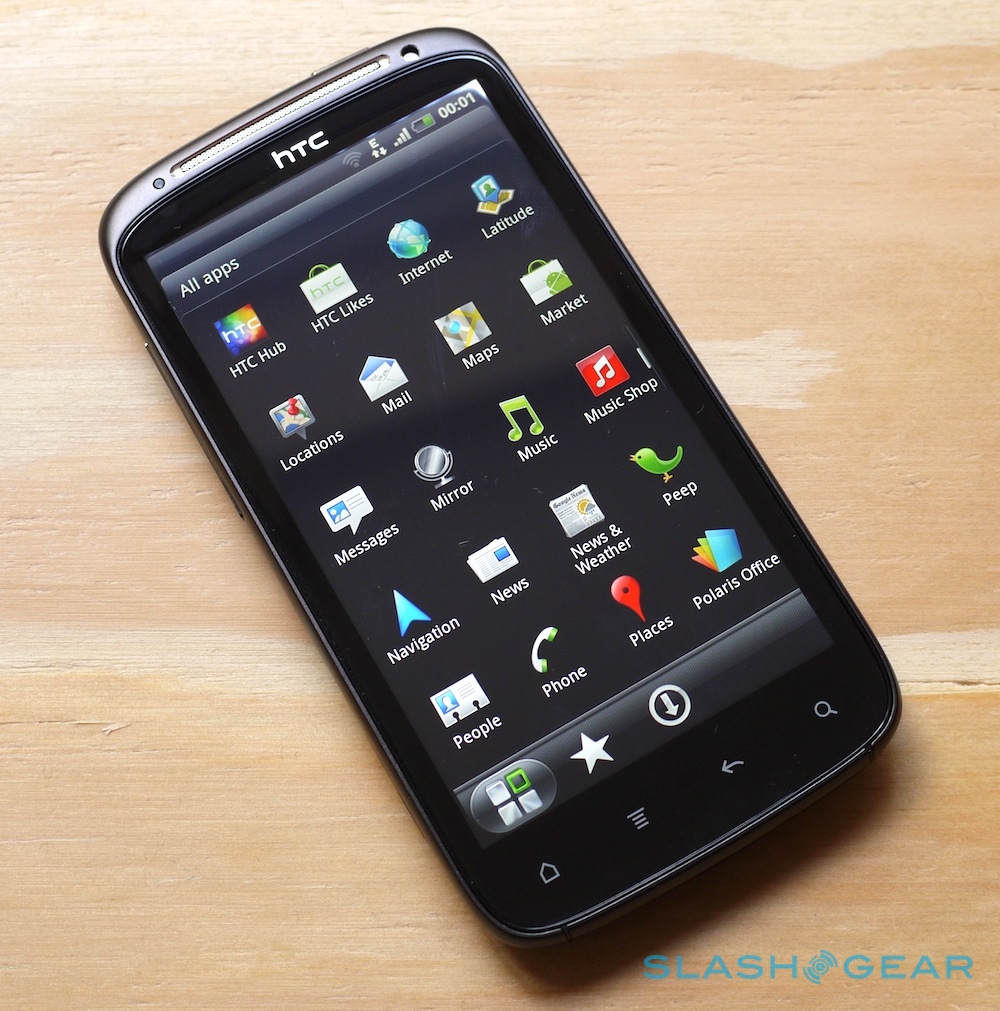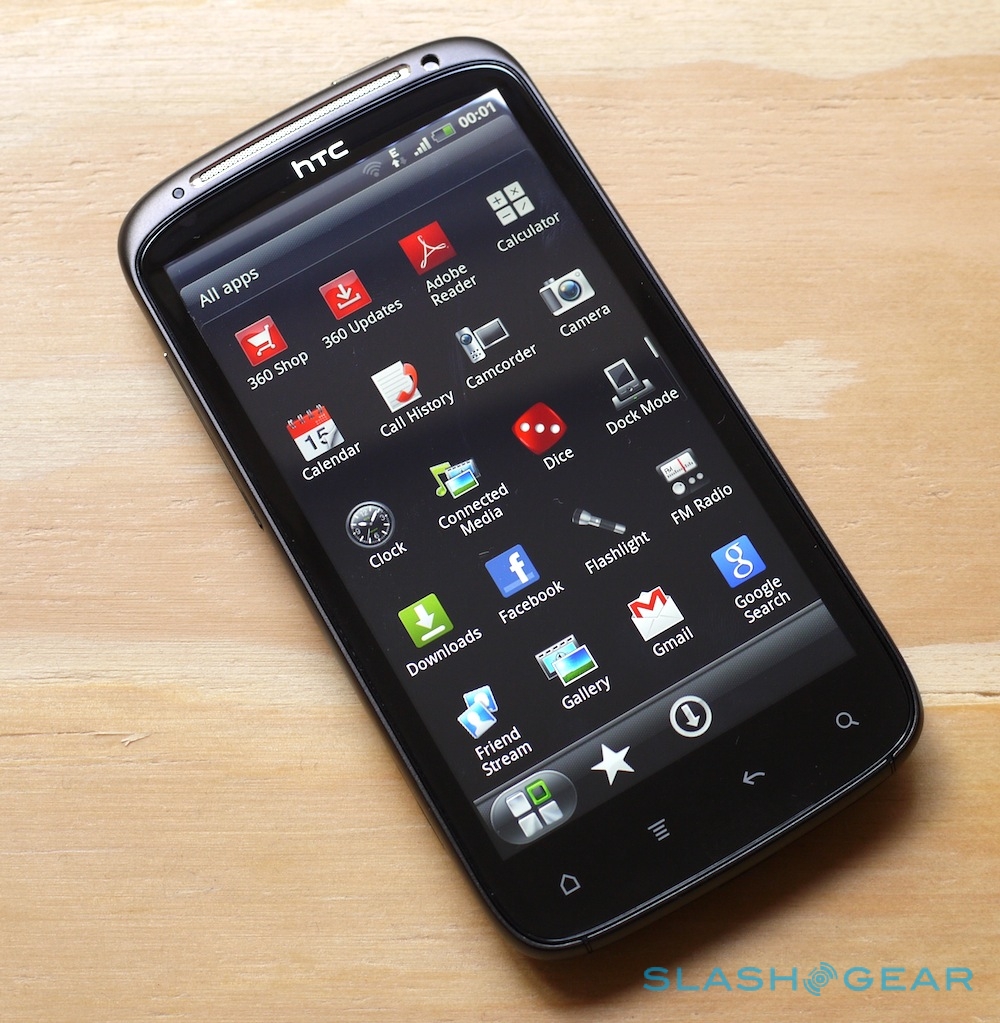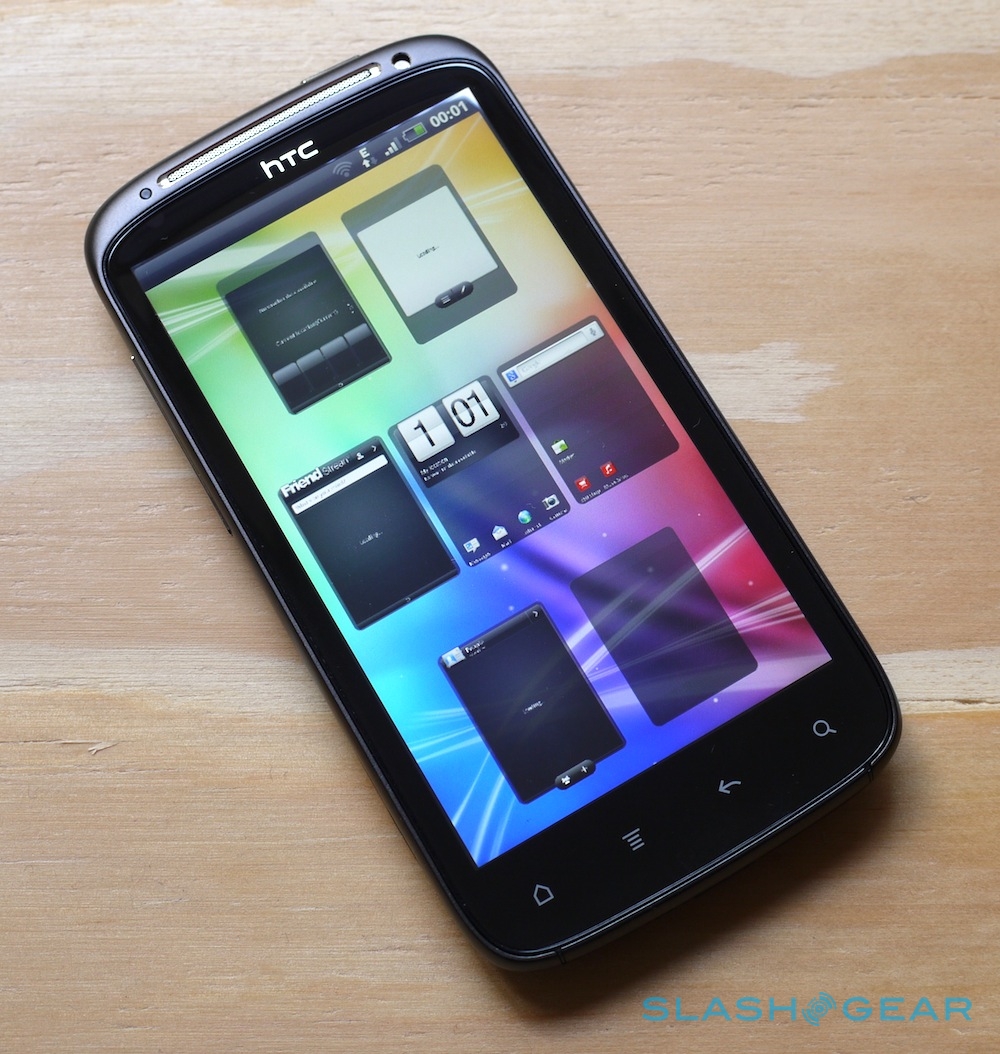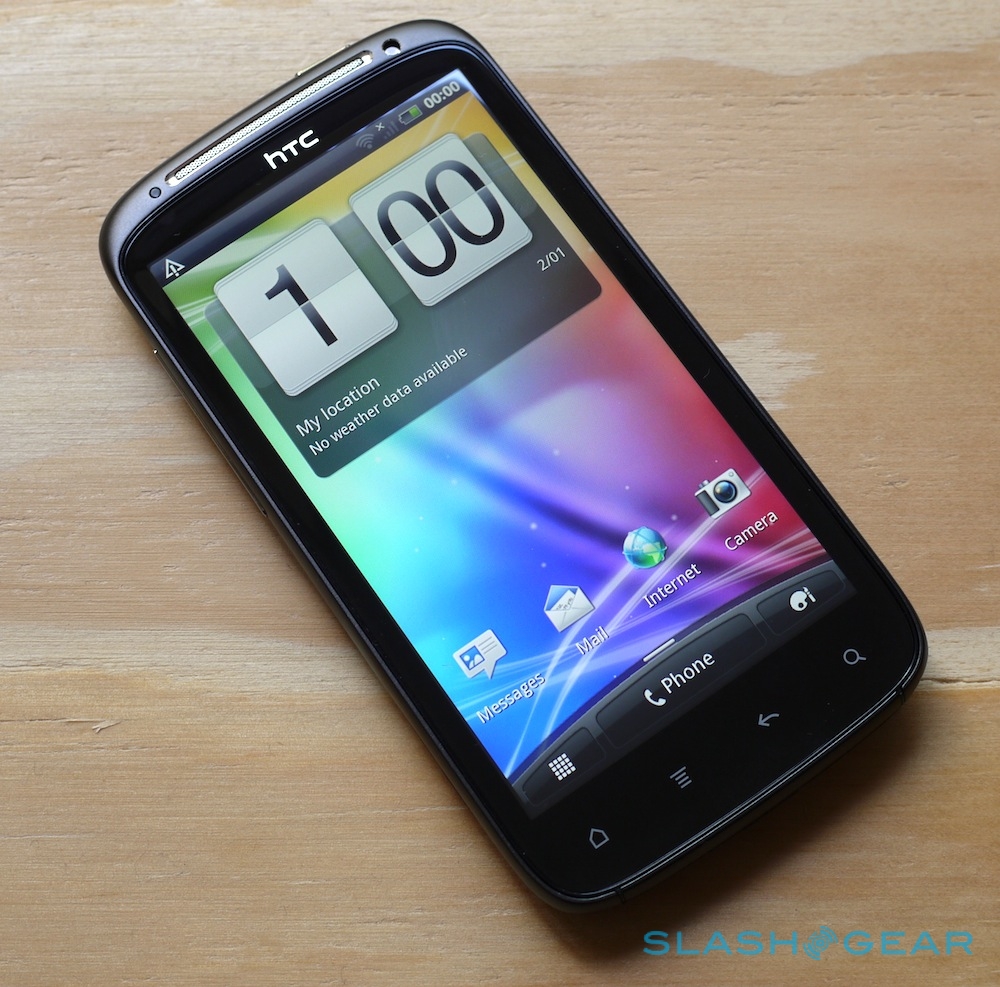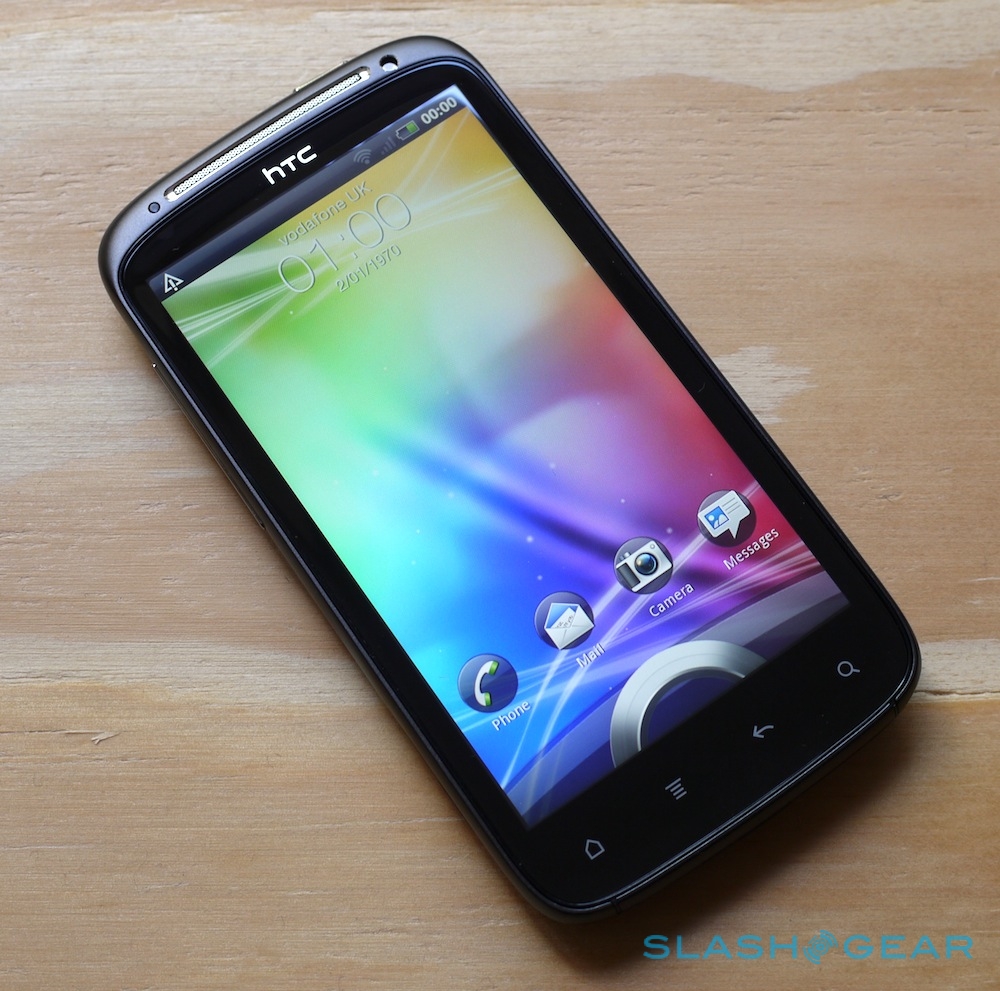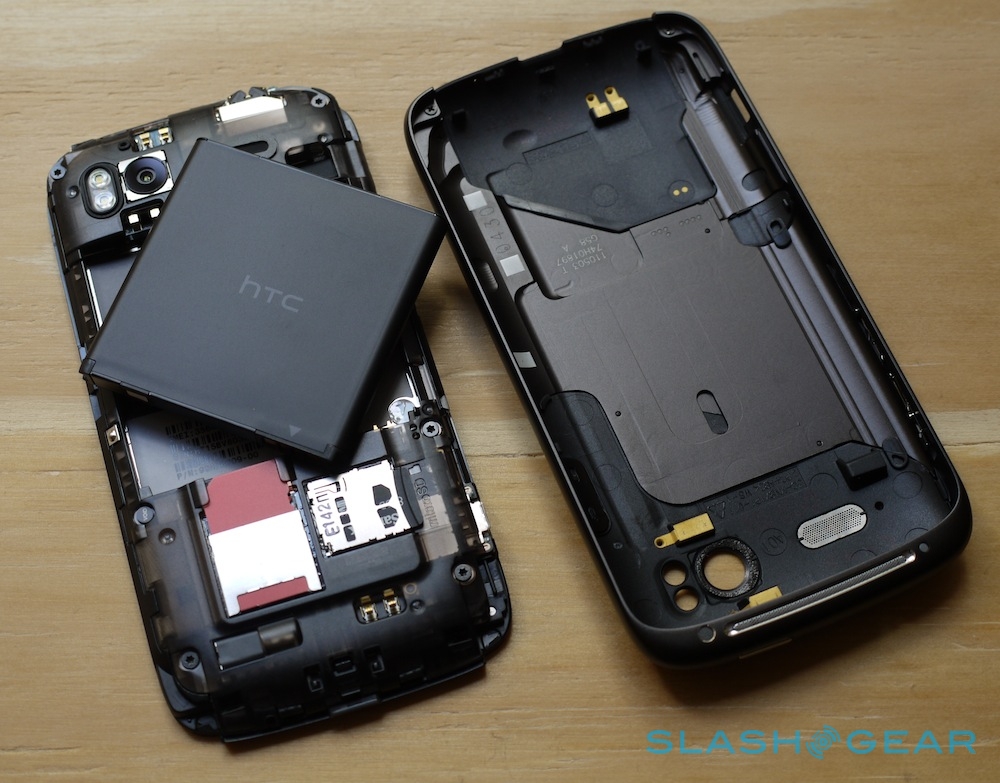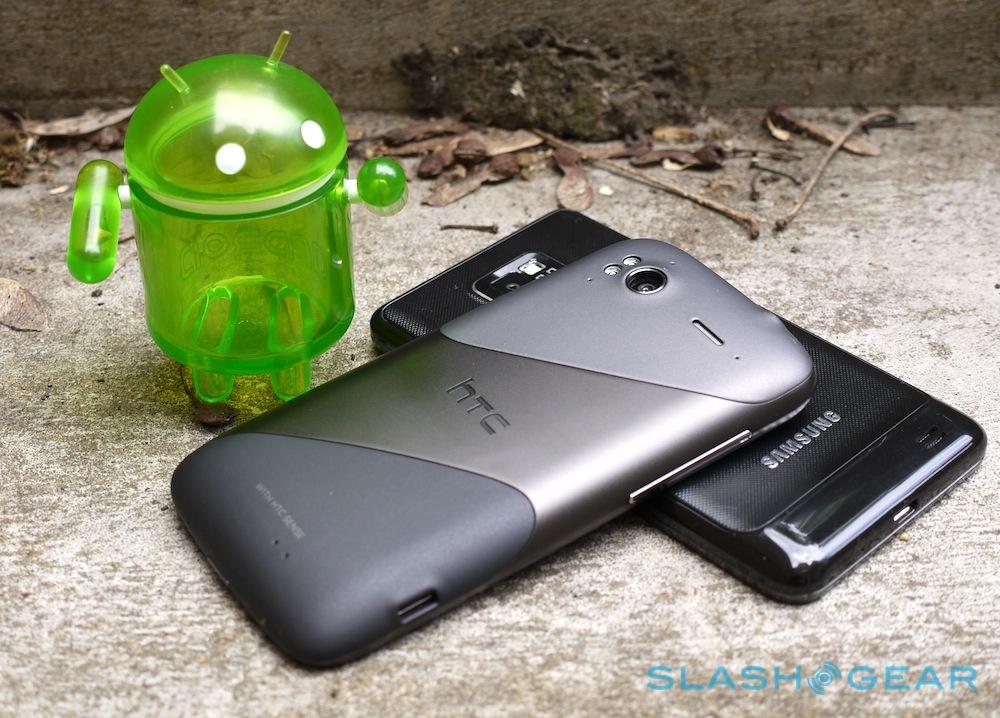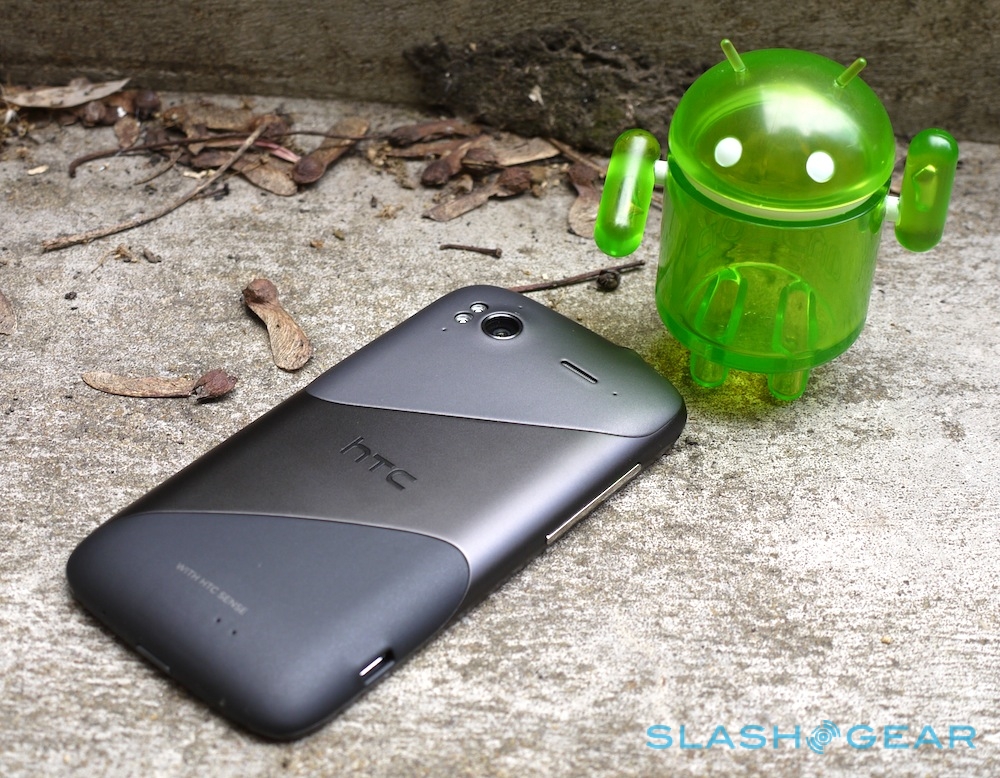HTC Sensation Review
Once, Android's primary challenge was the iPhone: proving that Google's open-source platform – and the devices that ran it – were good enough to share retail space with Apple's groundbreaking smartphone. Now, with dominant market-share and increasingly polished handsets, the battle is between 'droids. Into the fray drops the HTC Sensation, the company's new dual-core flagship. It's certainly the best-spec'd HTC to date, but is it enough to beat Samsung's all-conquering Galaxy S II? Check out the full SlashGear review after the cut.
Hardware
In many ways, HTC's approach with the Sensation is the antithesis of Samsung's strategy. Where the Galaxy S II aimed for the "thinnest smartphone" title, compromising hand-feel in its rush to shed ounces, HTC has come up with a thicker device that feels far more in keeping with the flagship positioning. At 4.96 x 2.57 x 0.44 inches and 5.22oz, and combining a unibody metal chassis with soft-touch plastic inserts, the Sensation is slightly longer, slightly deeper, slightly narrower and a fair bit heavier than the GSII.
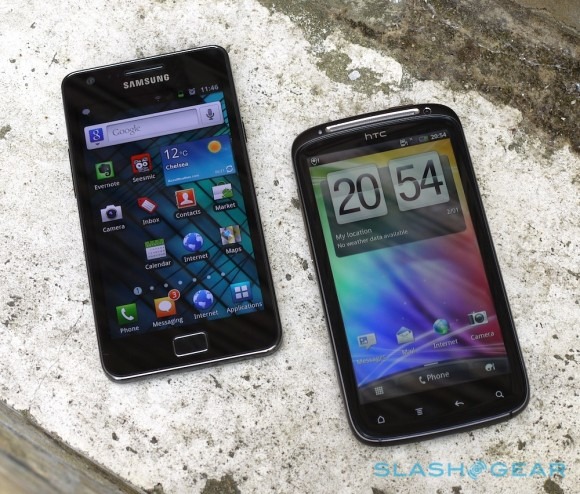
Opinions proved divided when we asked people for their favorite, some liking the waifish construction of the Samsung and others preferring the reassuring solidity of the HTC. It's worth noting that the more curved chassis of the Sensation helps disguise its size and actually makes it feel smaller face-on than the Galaxy S II. It's creak-free, too, and unlike the fiddly pop-off doors of previous HTCs, the entire rear panel unclips and the guts of the smartphone lift out to allow access to the battery compartment, SIM slot and microSD slot.
Up front is a 4.3-inch qHD 960 x 540 resolution LCD display and four touch-sensitive buttons underneath, fronted with a sheet of Gorilla Glass that tapers up to the edges. This meniscus helps keep the glass off the table when you flip the Sensation face-down – handy, since doing so automatically silences incoming calls – as well as giving your thumb some tactile feedback when it's approaching the edge of the display. The panel itself is bright and crisp, the extra pixels leaving graphics and text smooth and very readable. It's particularly useful in the browser, where pages can often be read without first zooming, though ebooks and videos look great too.
HTC Sensation unboxing & hands-on:
[vms 50e280d8e2b535462ec1]
Things are advanced inside, too, with the Sensation providing the first real outing for Qualcomm's new Snapdragon MSM8660 processor. A 1.2GHz dual-core chip, the MSM8660 differs from rivals in offering asynchronous cores that can run at different frequencies and voltages, unlike most synchronous processors on the market today. HTC reckons that adds up to reduced power consumption, since it can scale to suit whatever app you're running in a more granular fashion. It's paired with Adreno 220 graphics, and altogether makes the Sensation HTC's most powerful Android device so far.
There are some glaring flaws, however. Where the GSII pairs its 1.2GHz dual-core with 1GB of RAM, the Sensation makes do with 768MB. Similarly, while Samsung have packed 16GB of memory into their flagship, HTC leaves users with just 1GB baked inside; instead you get a preloaded 8GB microSD card. Unfortunately, there's just no way that even a fast microSDHC card can be as quick as NANDFlash connected directly to the logic board, and that leaves the Sensation at a speed disadvantage.
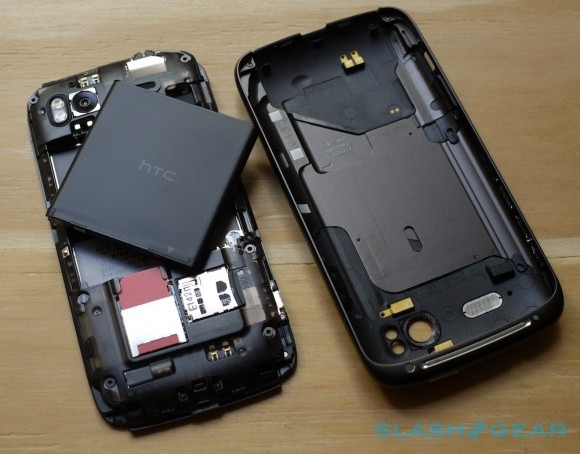
By relying on external storage, HTC has also bypassed the EXT4 filesystem, one of the factors which we saw speed up performance on the Galaxy S II. EXT4 support arrived in Android 2.3, but the Sensation's microSD card still uses FAT and the 1GB of internal memory is too small for a journaled filesystem.
Connectivity includes 900/AWS/2100 HSPA/WCDMA support – the Sensation 4G for T-Mobile USA will have HSPA+ – along with quadband GSM/EDGE, WiFi b/g/n and Bluetooth 3.0. The microUSB port on the lower left edge, under the long (and easily pressed) volume rocker doubles as a 1080p HDMI output if you have the correct MHL adapter cable (which is unfortunately neither bundled in the box nor available to buy separately yet).
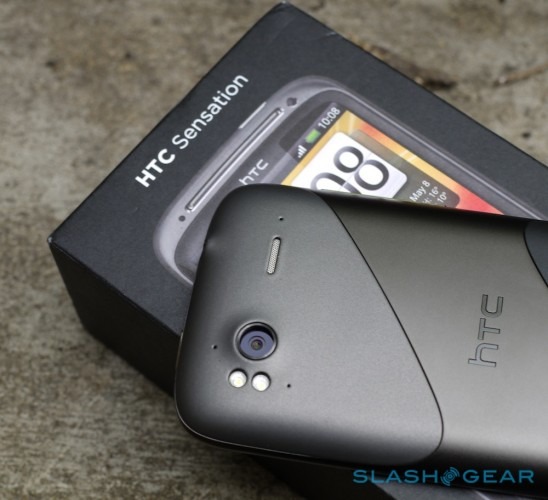
Then there's the usual gamut of sensors, including GPS, gyroscope, G-sensor, digital compass, proximity and ambient light, along with a pair of cameras – 8-megapixels with autofocus and a dual-LED flash on the back, and a VGA fixed-focus camera up front for video calls. An FM radio – which uses the bundled wired hands-free kit as an antenna – and SRS virtual surround sound round out the key specs.
Software and Performance
HTC has slapped Android 2.3.3 Gingerbread onto the Sensation, complete with the latest version of HTC Sense, v3.0. As we saw on the Flyer, the newest Sense brings with it a useful Active Lockscreen with app shortcuts, more 3D effects in the seven-pane homescreen, and various tweaks throughout the UI that smooth over some of Android's ruffles.
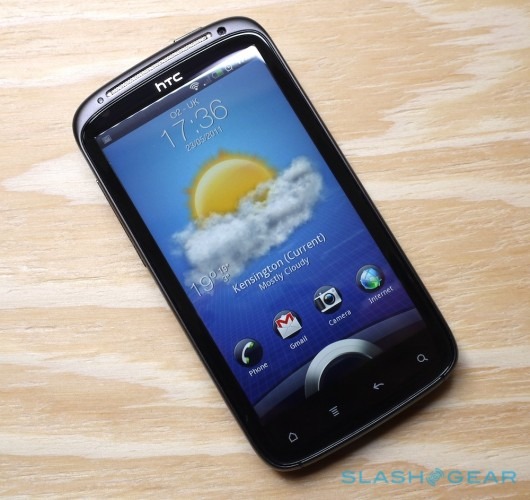
In general, the improvements are welcome. The Active Lockscreen – which allows you to pin four icons above the launcher hoop, unlocking the phone and opening the app in one swoop by dragging the shortcut down to the bottom of the screen – makes for a handy way to get into your commonly-accessed apps, and it also makes missed calls and SMS messages more obvious. The homescreen (viewable in portrait orientation only, unlike the Flyer's landscape layout) whips around in a continuous loop, which slick 3D animations that change the viewpoint the faster that you swipe, and there are multiple skins and scenes to change the layout and theme (as well as more to download in the HTC Hub store).
The drop-down notifications bar has the same two tabs as on the Desire S, for alerts and quick access to settings, as well as a list of recently-opened apps. We did find that the curved glass could make quickly flicking the notifications pane down a hit-or-miss affair sometimes. There's also HTCSense.com support, HTC's free service which offers remote phone access, sync and tracking, among other things.
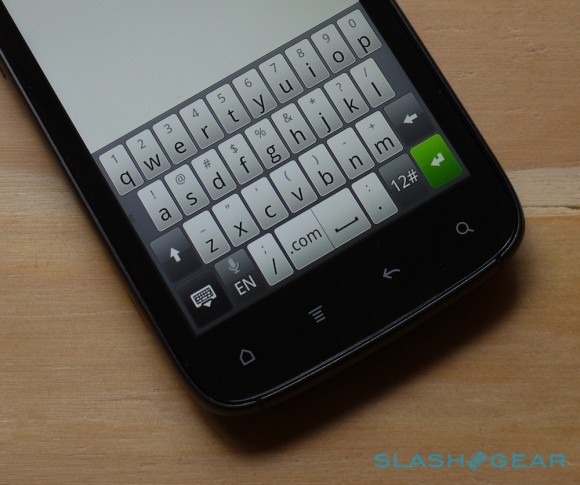
Preinstalled apps include HTC's Dock Mode – which shows a recent Facebook update pulled from FriendStream along with weather and media shortcuts, and is designed to be used as a desktop or bedside clock; it can also be set to automatically launch the Mobile Hotspot app too – and Flashlight, which uses the LED camera light as a torch. There's also Locations, HTC's offline mapping system (which demands a subscription if you want the same turn-by-turn functionality that Android offers free with Google Maps Navigation), the Teeter game and HTC Watch.
Just as on the Flyer, Watch allows access to purchased or rented movies and TV shows, complete with streaming trailers (that can be viewed over 3G or WiFi connections; full content downloads can only be made over WiFi). If you've already got an account from your Flyer – or, indeed, another HTC phone when the company rolls Watch out on other devices – then you can access existing content you've bought (though not rented) on the Sensation. On our UK unit, movies were priced between £7.99 and £9.99 to purchase or £2.49 to £3.49 to rent; TV shows were generally £1.49 to buy.
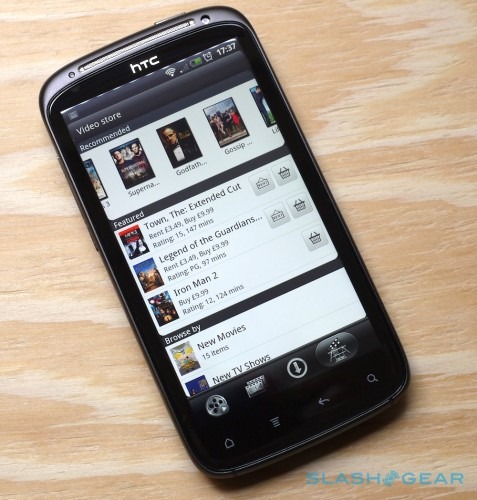
Watch works well, though right now there's not a huge amount of content to choose from. It's also worth noting that, at present, there's no way to get the video off your phone or tablet and onto a different platform: it's locked to Watch on the Sensation or Flyer. If you and your family all use new HTC devices then perhaps that makes sense, but other platforms offer greater flexibility with their digital content.
The HTC Reader app is present, though lacks the clever annotation support of the Flyer. It has an ebook store powered by Kobo, with titles ranging from free classics to new bestsellers. Obviously you can also download Amazon's Kindle app or another ereader app from the Android Market if you prefer.
Finally there's the Mirror app, which turns the Sensation into a very expensive way of checking your eyebrows match. With HTC's video calling app still missing-in-action, it's up to third-party apps to fill that gap. Qik Video Connect works, though we found it sends the front camera image upside-down. We're guessing the company will address that in an update, since we've seen similar teething pains with other new handsets to the market.
HTC Sensation vs Samsung Galaxy S II:
[vms fc240dd2674a7d063b04]
We had high hopes for the dual-core 1.2GHz processor, but the benchmarks paint a less impressive picture than on the Galaxy S II. In Quadrant Advanced, the Sensation scored 2245 overall versus the Samsung's 3504. Memory and I/O sub-scores were also telling, with the HTC managing 1794 and 2408 respectively, while the GSII came in at 3823 and 4472 respectively; that suggests that the Samsung will handle heavier loads and more frequent data reads/writes better than the Sensation can.
In SmartBench 2011, the Sensation scored 2340 against the GSII's 3878, though the HTC did hold its own with a score of 47.257 MFLOPS in Linpack Pro versus the Samsung's 46.939 MFLOPS. As we've seen on HTC's Android phones before, JavaScript benchmark tool SunSpider doesn't seem to play nicely with the customized browser, coming in with a 6481.8m/s score (almost twice the GSII) that we suspect is artificially sluggish.
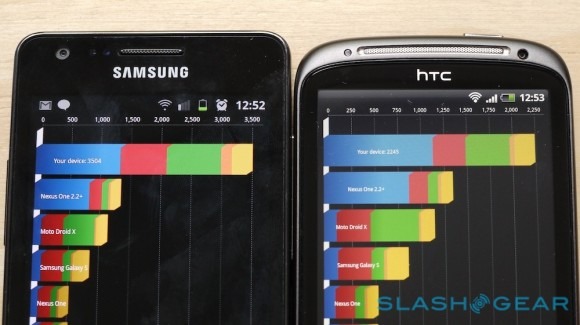
What the raw figures don't communicate is how responsive the Sensation feels in daily use. Side-by-side with the Galaxy S II, and it's hard to tell the difference between the two phones: apps load quickly, webpages render at the same pace (in fact the Flash-heavy NYTimes.com frontpage finished on the HTC before it did on the Samsung). Even loaded down with simultaneously running apps, we didn't feel like the Sensation was gasping for breath (or, indeed, for more RAM).
Out of the box performance is only half the Android story, of course. The platform has built a dedicated following of modders, for whom a factory-fresh device is a challenge not a treat. Here, HTC's attitude to third-party Android ROMs may see them suffer: the Sensation comes with a locked bootloader, meaning it's more difficult to install unofficial versions of Android. In contrast, Samsung has left the Galaxy S II more flexible in what it will run. We're already seeing GSII overclock hacks stretching the processor out to 1.4GHz and higher; HTC's decision is likely to leave the modding market to Samsung.
Camera
The Sensation's 8-megapixel camera arguably has two key challenges: not only changing a run of lackluster optics on previous HTC-made phones, but taking on the extremely proficient imaging abilities of the Galaxy S II. Happily HTC's shooter marks a significant step up in quality in both stills and video.
No more drab colors or middling detail; no more murky indoor shots. Colors are on the cool side on-screen when the Sensation is side-by-side with the GSII, but viewed off the phone and they look far more accurate. Close-ups are clear and crisp. The Sensation prefers bright lighting – as do most cellphone cameras, to be fair – with the overcast weather in some of our sample shots prompting a little more processing than we'd prefer to see.
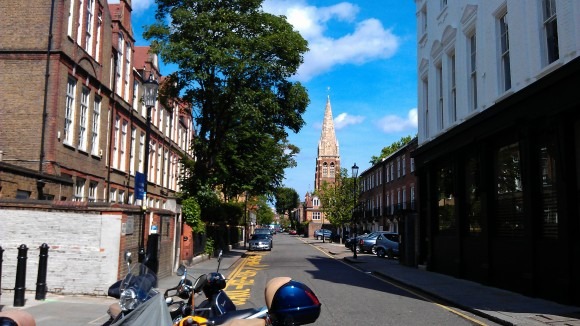
The Sensation lacks a physical camera button but with the shortcut a lockscreen default it loads quickly all the same. HTC claims to have shaved away at the startup time and reduced the lag in-between tapping the on-screen button and the frame being captured, though in our (admittedly reasonably unscientific) head-to-head tests against the GSII it was neck-and-neck going from the homescreen to a shot being taken. Fast, but not the revolution in cameraphone photography that HTC seemed to imply.
Video, meanwhile, is recorded at up to 1080p Full HD resolution. Panning can lead to some tearing or jerkiness of the footage, though when steady there's plenty of detail and the stereo microphone array is – as the wind noise in the sample clip below attests – perhaps a little too ambitious. Still, it's a marked improvement over previous HTC devices. There's integrated video trimming support in the gallery, and DLNA streaming to your TV.
As for the front-facing camera, finally, at VGA resolution it's hardly promising much, and the end results are as pixelated as you'd expect. Over the same WiFi network, video calls using Qik Video Connect looked significantly better using the GSII's 2-megapixel front camera than the Sensation's camera.
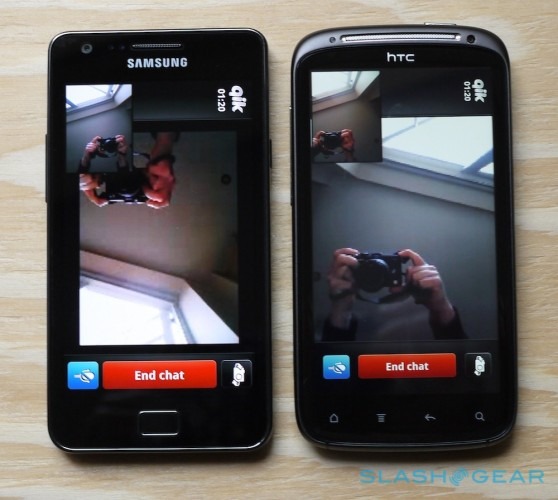
Phone and Battery
We had no issues with phone performance on the Sensation, with both parties sounding clear. Speakerphone performance, meanwhile, is reasonably loud but prone to some distortion at top volume.
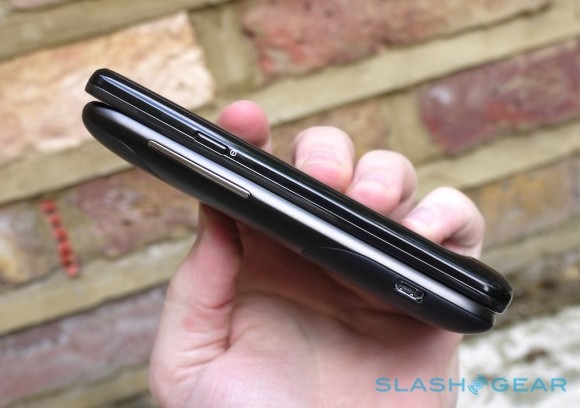
HTC quote up to 495 minutes talktime or up to 400 hours standby from the 1,520 mAh battery; having experienced two days use from a single charge on the Galaxy S II, we were eager to see how well HTC's power management would perform on the Sensation. In practice, with push email turned on, periodic social network refreshes, some Google Maps and browsing use, and after 30 minutes of streaming TV using the BBC iPlayer app (using the Sensation's speaker rather than headphones), and by the evening the handset was still showing around quarter of its charge.
That suggests that, with some judicious power management, you could get some way into the second day with the Sensation on a single battery. Not quite the performance of the Galaxy S II, but decent compared to the previous HTC Desire HD which was quite the glutton for juice.
Pricing and Value
The HTC Sensation launches as a Vodafone exclusive in Europe initially, with the smartphone offered "free" on £30 ($48) tariffs with a two-year agreement. That undercuts the Galaxy S II by around £5 per month, or £120 ($194) over the course of the contract. SIM-free sales are yet to begin, with stock expected toward the end of June; the Sensation expected at around the £498 ($800) price point, including VAT.
Pricing for the HTC Sensation 4G on T-Mobile USA is yet to be confirmed, though we're expecting it to follow the usual $199.99 pattern with a new, two-year agreement including a mandatory data plan.
Wrap-Up
It's a good time for Android smartphone fans. The Galaxy S II has already proved that devices running Google's OS are certainly capable of stepping out from underneath the shadow of the iPhone, and the HTC Sensation is evidence that Samsung's win can't be dismissed as a one-off aberration. In Gingerbread form, Android has matured into a stable platform with growing choice in the Android Market to support it.
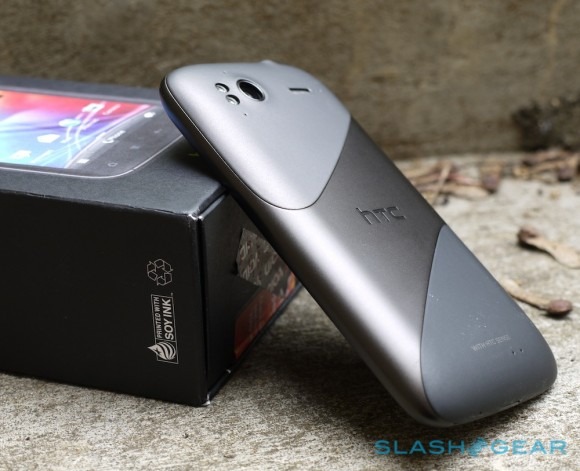
With strong devices, of course, come difficult decisions, and choosing between the Sensation and Samsung's Galaxy S II is perhaps the most difficult to-date. Both have their hardware strengths: the Sensation's qHD display lends itself well to browsing and ebook reading, while the lower-resolution Super AMOLED Plus of the GSII is better suited to multimedia. Samsung offers more RAM and internal storage, but the Sensation never felt at a loss aside from in the benchmarking apps themselves. Meanwhile, HTC Sense feels more thought-out and complete than TouchWiz, and the out-of-the-box experience with the Sensation is more polished than that of the GSII.
Neither is a bad device nor a bad choice; our gut reaction is to think of the Sensation as the consumer's phone and the Galaxy S II as the Android fan's phone. Broad brushstrokes do neither any great favors, though. HTC's attitude to mods may dissuade the Android faithful, but those looking for a solid, well-designed smartphone with a premium feel and refined combination of hardware, software and services will be served excellently by the HTC Sensation.

